Advancing the interest, engagement and understanding of science at Georgia College and beyond by people of all backgrounds.

EDITOR’S LETTER
he Science Education Center has always strived to be a place to engage curious minds through experiences that help build important skills like critical thinking, communication and collaboration. With the simmering of the pandemic within reach in 2021, we imagined what the ‘new’ normal could look like personally and professionally. At the Science Education Center, we recognized that an emergence from one of the most significant events of our lifetimes wasn’t an invitation to revert to the status quo, but to push forward in new and exciting ways.
Following a period of upheaval and uncertainty, the beginning of 2021, and throughout 2022 was marked by extraordinary challenges and concerns. However, in the end of 2021, the enduring impression of the year is one of triumph, resilience and hope. This pandemic has reminded us that science matters now more than ever. It helps us not only to better understand the world around us
but provides skills to address the problems plaguing it. Our youth can save the world and science can help them do it!

Since the pandemic, the Science Education Center adapted to new realities and new methods of delivering science learning. The resurgence of in-person activities has filled us with a creative energy that will bring new experiences and get us back on the path of building better relationships with communities.
We have an important job to do, all of us—educators, community leaders, GC faculty, staff and students, donors, volunteers—which is to come together to create an environment that supports creativity and learning.
I look forward to continuing to inspire science learning in everyone in 2023!
Dr. Catrena Lisse Editor
- Young Scientists Academy
SCIENCE EDUCATION CENTER: Catrena Lisse Director
Sarah Fix Intern and Research Assistant
Ashley Garcia Outreach Coordinator
Patti Veal Administrative Assistant
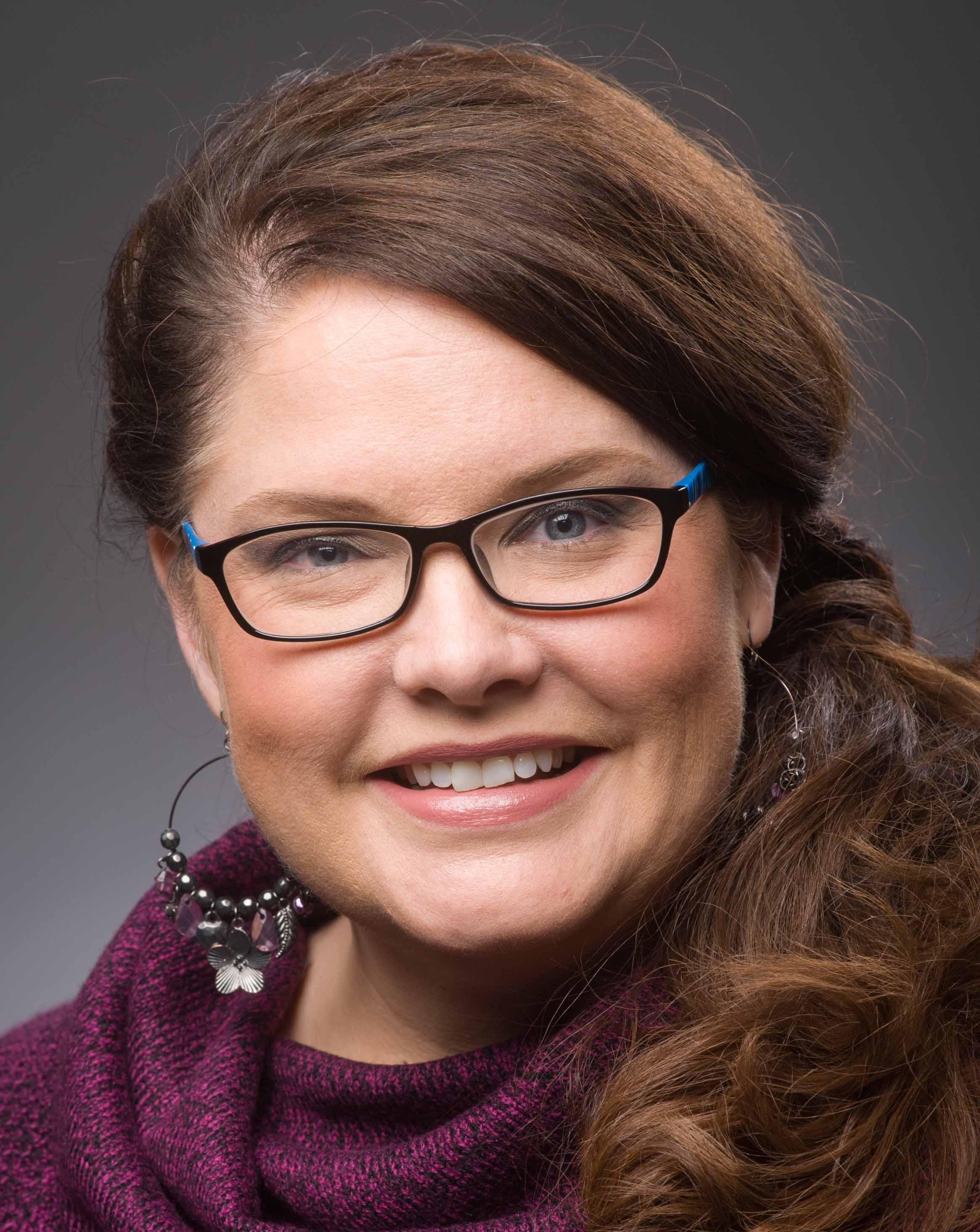
EDITORS: Catrena Lisse and Kristen Maddox
NEWSLETTER DESIGN: Creative Services

PHOTOGRAPHY: Anna Leavitt, Kristen Maddox
Cathy Cox President
Costas Spirou Provost and Vice President for Academic Affairs
Eric Tenbus Dean, College of Arts and Sciences
Winston Tripp Associate Dean, College of Arts and Sciences
Joseph Peters Dean, John H. Lounsbury College of Education
Omar Odeh Vice President for Strategic Communications, University Communications
NUCLEUS | 2 | gcsu.edu/science NUCLEUS THE Available online at gcsu.edu/science “The Nucleus” is a Science To Serve newsletter published annually by the Science Education Center and University Communications at Georgia College. Science to Serve is supported, in part, by generous donations from the kaolin industry. The newsletter is available online at gcsu.edu/science. 349 Herty Hall • 478-445-7531 • Send us your science news: science@gcsu.edu
CONTENTS
STEM News .............................3
Spotlight ...............7
DeMontigny TEACHER ................................8 of the year HIGHLIGHTS 10
Story .......................16
Student
- Wesley
Cover
FAUNA AND FLORA
Ecosystems teach students about diversity and sustainability
From bluffs and dunes to rocky cliffs and mountain peaks—six environmental science majors took multiple mini-trips this summer to learn about the state’s diverse ecosystems.
The monthlong study-away program was headed by Dr. Bruce Snyder and Dr. Christine Mutiti, associate professors of biology and environmental science. The faculty led students on informative day trips and longer camping excursions. Together, they studied the biogeographical imprints of forests, upper and lower coastal plains and vast canyons.
“Georgia is an incredibly diverse state and few students have had a chance to visit many of these sites,” Snyder said. “We rarely teach from this approach where we look at the whole ecosystem.”
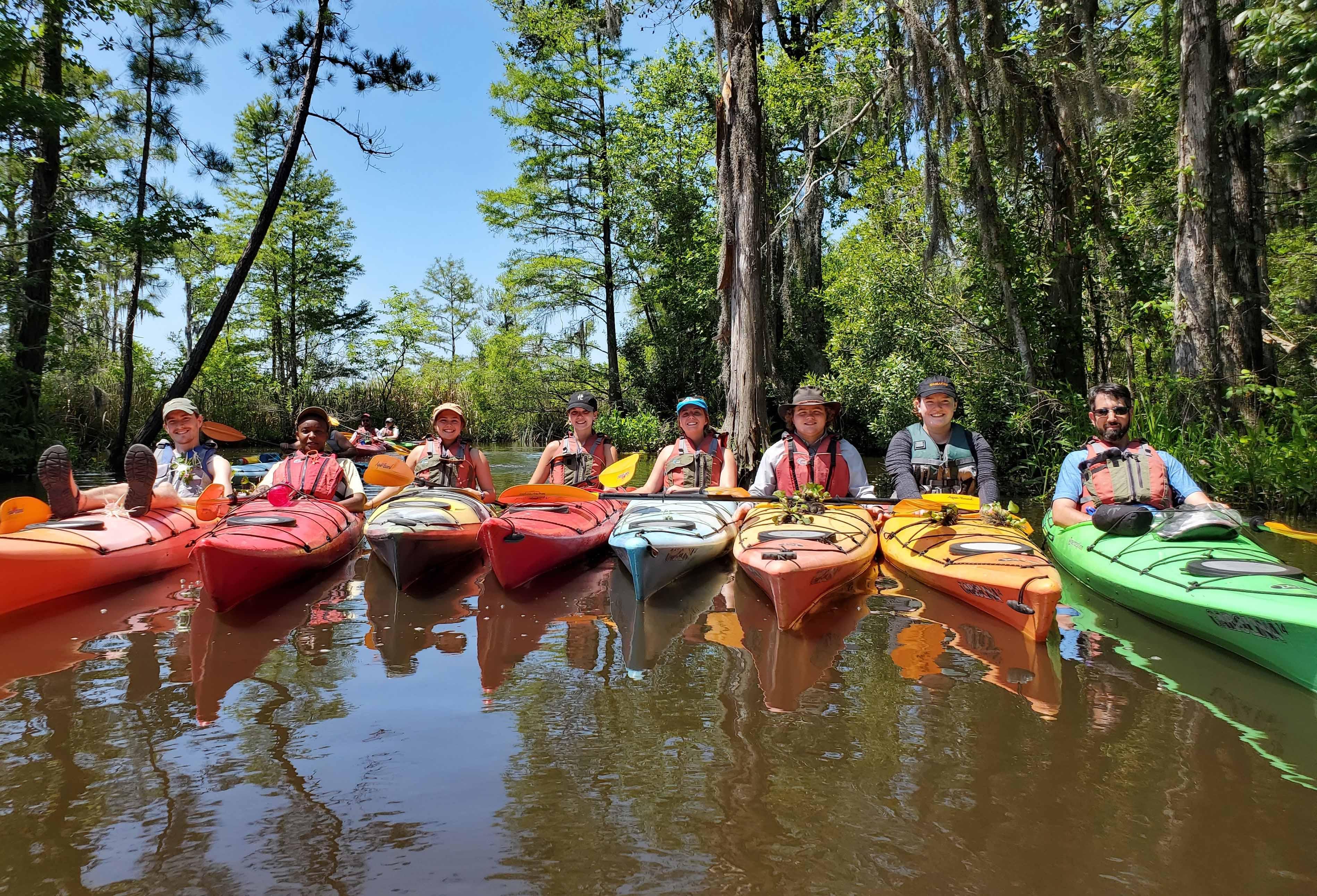
“While there’s a big emphasis on understanding plant communities, we also brought in geology, topography, soils, fire regime and other aspects that make each ecosystem unique,” he said.
Ecosystems are biological communities of interacting organisms— vegetation, waterways, wildlife and human impact. Students got up close and personal with these worlds, going beyond lectures and textbooks.
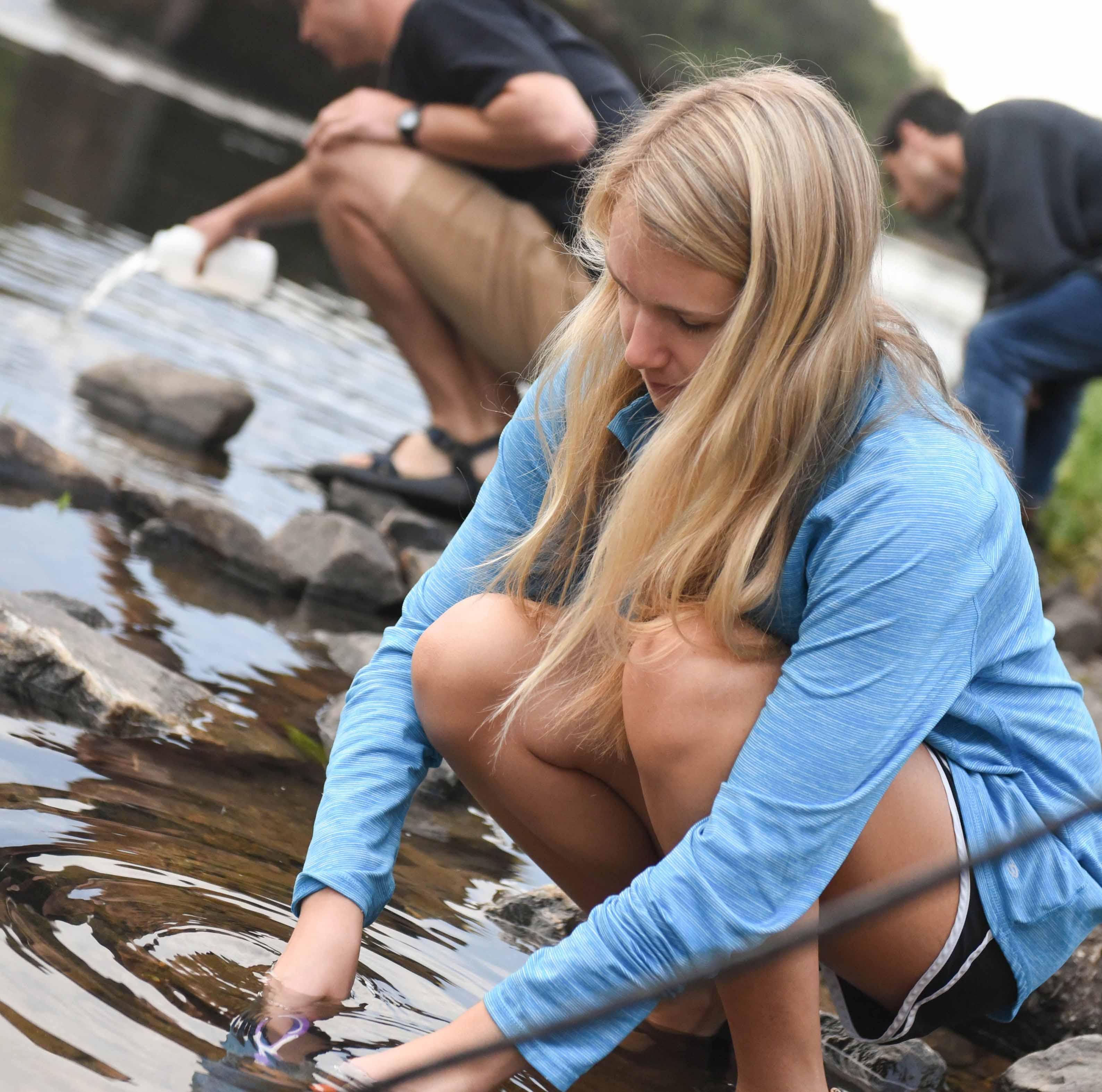
New Aquatic Sciences Center will provide water expertise
Careers in marine sciences are more important than ever— with oceans rising and the proliferation of toxic algae and pollutants. To ensure Georgia College & State University students are prepared, and to take advantage of faculty knowledge and expertise in this field, the university opened a new Aquatic Sciences Center (ASC) by fall 2022.
Out of 27 faculty in Georgia College’s Department of Biological and Environmental Sciences, about a third are linked in some way to water-related topics — both marine and freshwater. Faculty include Drs. Dave Bachoon, Andrei Barkovskii, Christopher Burt, Melanie DeVore, Greg Glotzbecker, Kalina Manoylov, Matt Milnes, Christine Mutiti, Sam Mutiti, Allison VandeVoort, David Weese and Kris White.
The new Aquatic Sciences Center will harness faculty knowledge and expertise under one umbrella. Existing strengths will be combined, and faculty will be encouraged to collaborate more fully, sharing equipment and ideas, Pillay said.

“Leveraging all this into a center will give us a unified mission and a unified approach, where we can train students in real-life applications of what we’re teaching in the classrooms and labs,” he said.
A director will soon be selected to oversee the center, along with a research technician. With a centralized administration and structure, Pillay hopes the center will be a platform for more graduate and undergraduate research, additional grant writing, student training and community engagement. The new center will also allow for the creation of summer research programs for students.
NUCLEUS | 3 | gcsu.edu/science
STEM NEWS
Biochemistry Ph.D. student wants to help educate public and gain knowledge to find treatments and cures for illness
Biochemistry Ph.D. student wants to help educate public and gain knowledge to find treatments and cures for illness
From an early age, Martin Alcantar, ’18, has always been fascinated by the sciences. As he grew, he realized that one of his favorite branches of science was studying biological processes and the chemistry that drives them. Later, he would find that his work could help alleviate food insecurity.
“My specific career path was not chosen with a job in mind, but rather from a want to further my education and gain a higher level of understanding of what drives life,” Alcantar said. “I wanted to learn the intricacies of how biological processes work.”
Today, he’s a third-year student in the Biochemistry Ph.D. program at the University of Missouri. Once he graduates, Alcantar hopes to make an impact in helping individuals who suffer from severe illness.
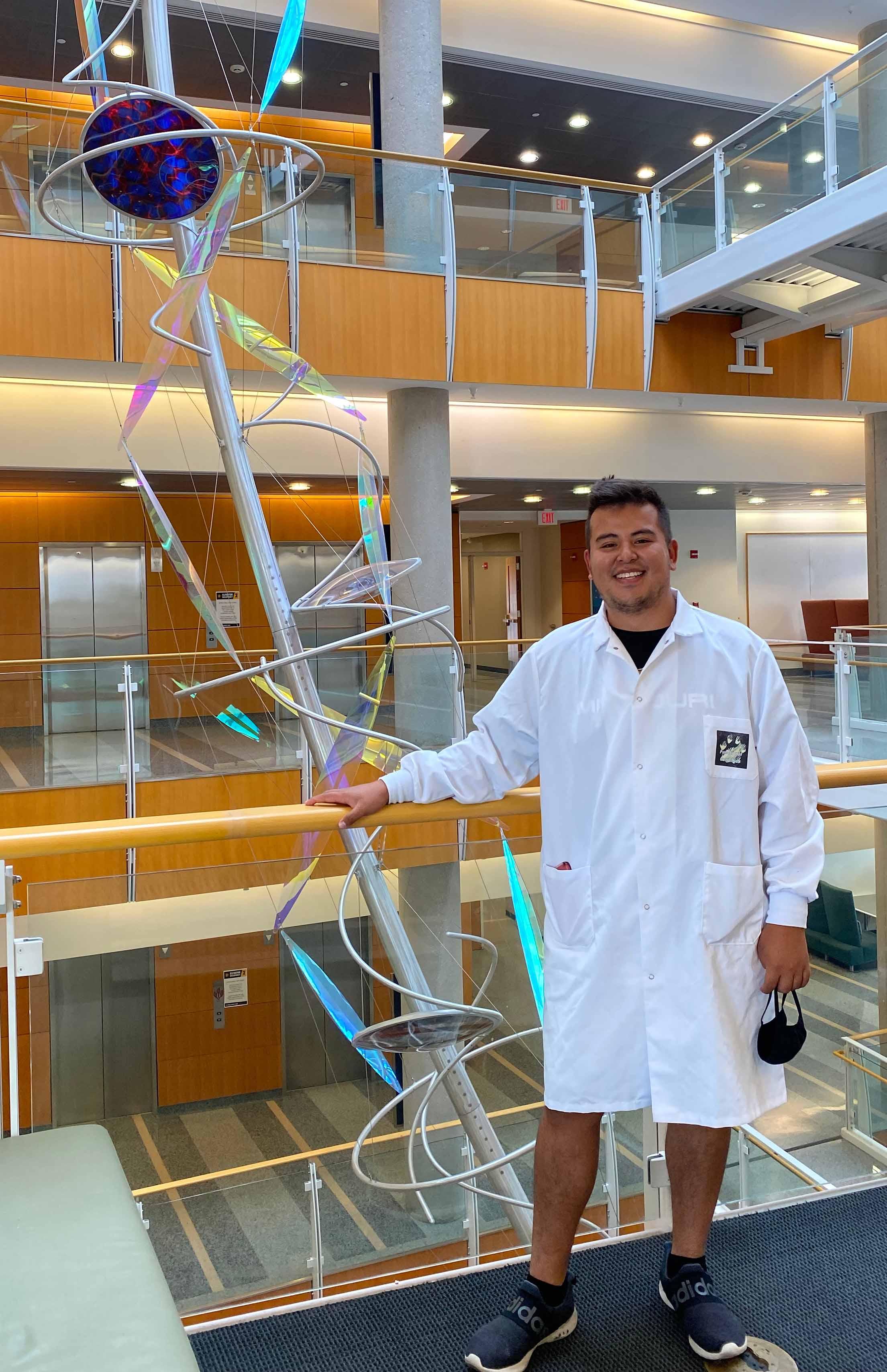
He works in the lab where he focuses on plant-pathogen interactions.
“We work towards explaining the pathways that plants use to fight off pathogenic bacteria upon infection,” Alcantar said.
More specifically, he works with a family of signaling molecules thought to be the missing link in an important signaling pathway responsible for initiating plant defense responses when sensing bacterial pathogens.
“This is important, because gaining an understanding of the strategies employed by plants will allow us to engineer crops to be more resistant to pathogenic attack,” Alcantar said. “In turn, it will help decrease the loss of crops and increase food security.”
Spooky good time with Mad Scientists
The Science Education Center was giving out more than candy at a community Trunk-or-Treat this Halloween.
Director, Dr. Catrena Lisse, was accompanied by Science Education Center volunteers: Sarah Fix, senior biology major, and Nicole Snyder and Cole Smith, both junior chemistry majors.
They welcomed over 2,000 community youth to their “Mad Scientist Trunk,” where they made glow in the dark slime and handed out brochures with at-home science experiments that kids can do in their kitchen using household items.

NUCLEUS | 4 | gcsu.edu/science
Martin Alcantar stands by an abstract DNA model located in the Christopher S. Bond Life Sciences Center atrium. The building employs any number of interdisciplinary techniques in research ranging from HIV to plants
WHERE THE BISON ROAMED
Paleontological dig shows a different Georgia
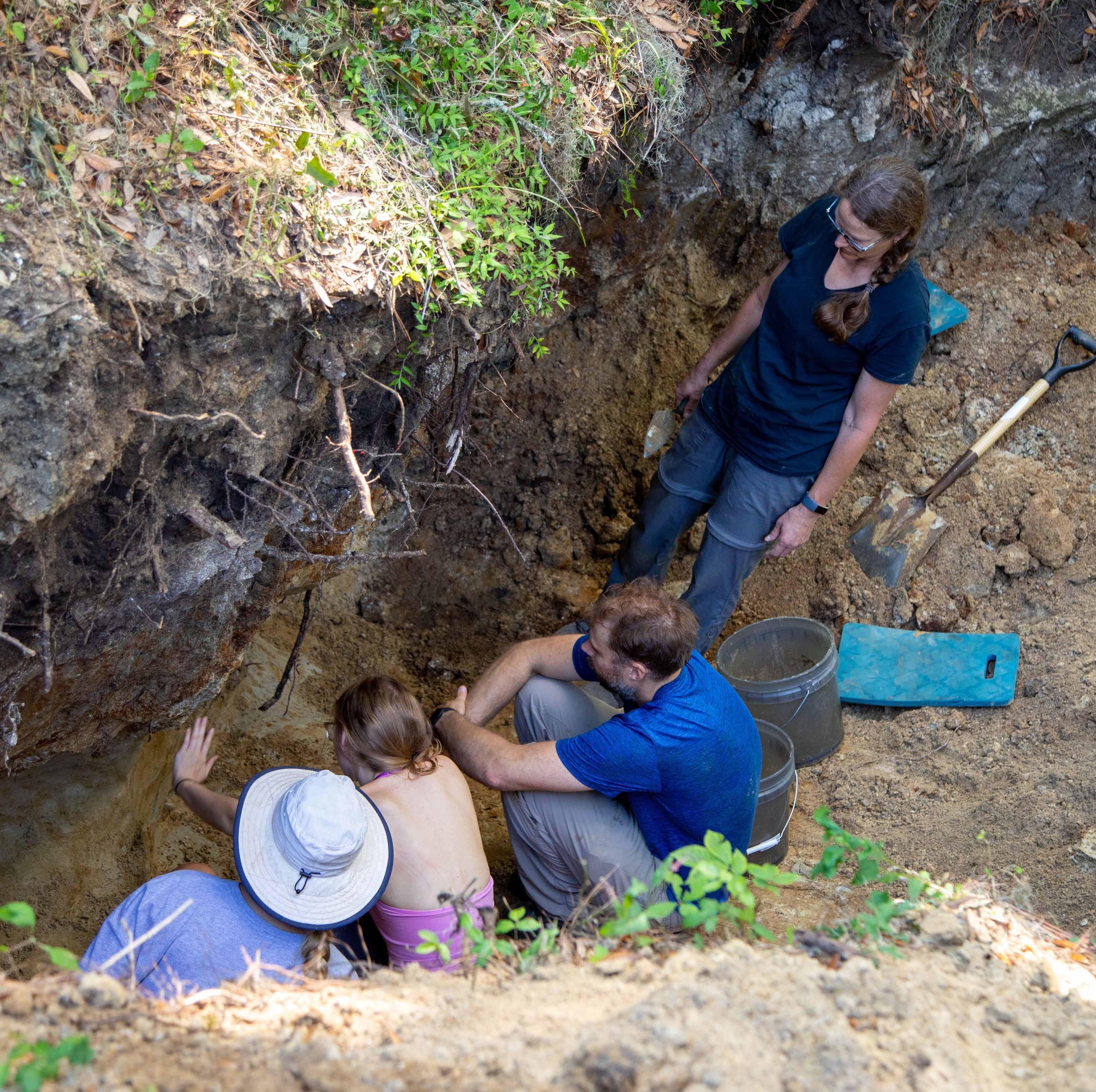
Imagine a Georgia—60,000 years ago— where the coastal city of Brunswick was 70 miles from the ocean and most of the state was a great, grassy plain where bison and mammoths roamed.
In an era when most people think paleo is a diet, a small public liberal arts school in Central Georgia is leading the way to unearthing this past.
In doing so, it reminds the world just how hip and modern real paleontology can be.
“Some people say paleontology is a dying profession and, at big research universities, that’s probably true. Many have eliminated their paleontology departments,” said Dr. Al Mead, a biology professor at Georgia College & State University.
Mead is a paleomammalogist who studies ecosystems of the past. He's also a Science Education Center faculty volunteer in local schools.
The dig site—the only excavation of its kind in Georgia—was discovered by twin brothers in 2001.
Joshua and Kelly Clark were in high school at the time, but later got under-
graduate and masters’ degrees at Georgia College in 2006 and ’09.
Sloshing through the creek on their family property, looking for salamanders to feed their pet turtle, they came across an enormous black bone sticking out of the muck.
He took one look and knew instantly: It was the jawbone of a prehistoric bison— an enormous creature weighing about 3,000 pounds with a horn span of 7 feet.
Finding mammoth bones only miles from the Atlantic “was just unheard of,” Mead said. The giant, long-tusked elephant-like bison prefer grazing areas like the American Great Plains.
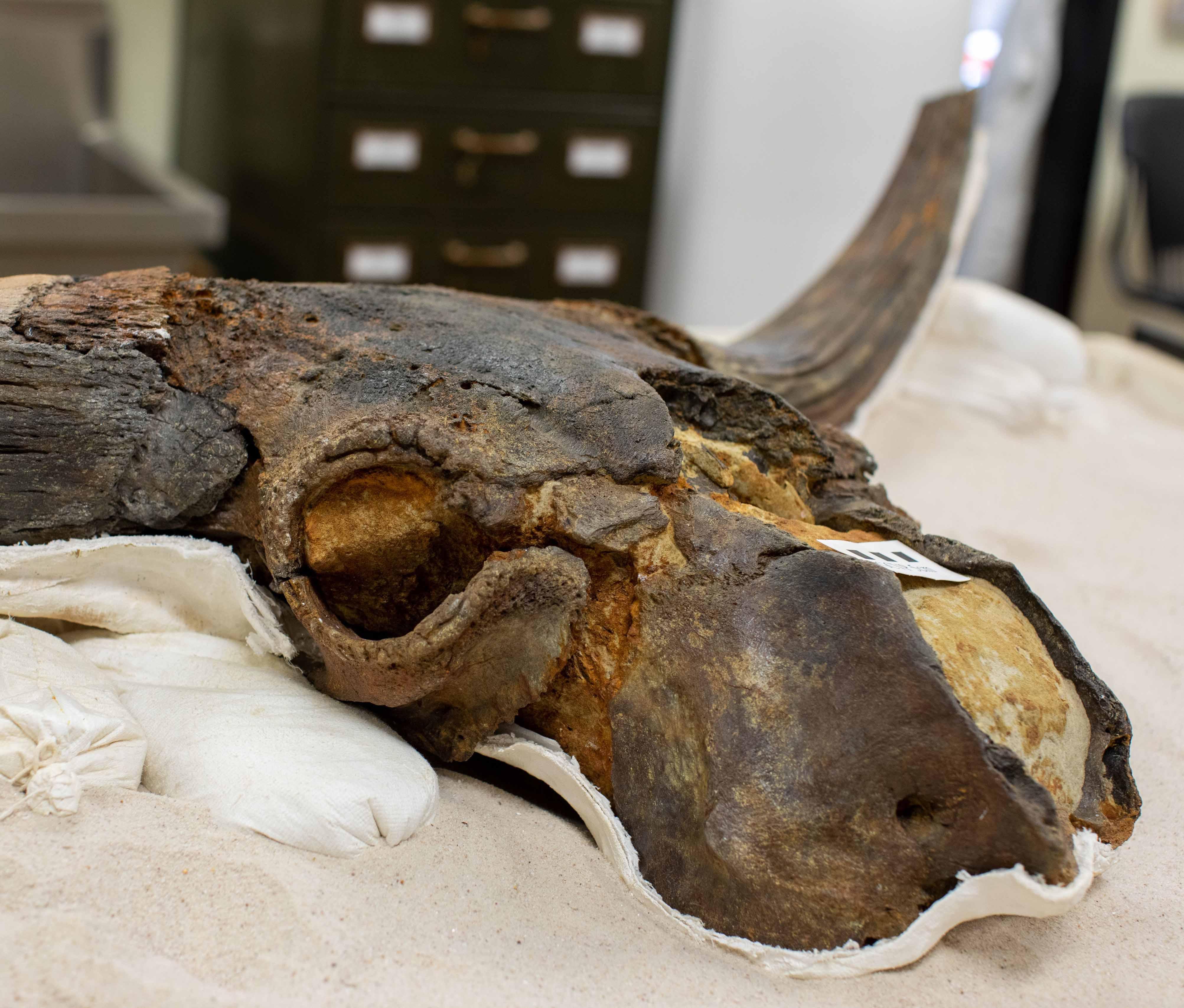
NUCLEUS | 5 | gcsu.edu/science
Dr. Sayo "Fakay” Fakayode
New chair named for department of chemistry, physics and astronomy
Dr. Sayo "Fakay” Fakayode has been named chair of Georgia College and State University’s Department of Chemistry, Physics and Astronomy.
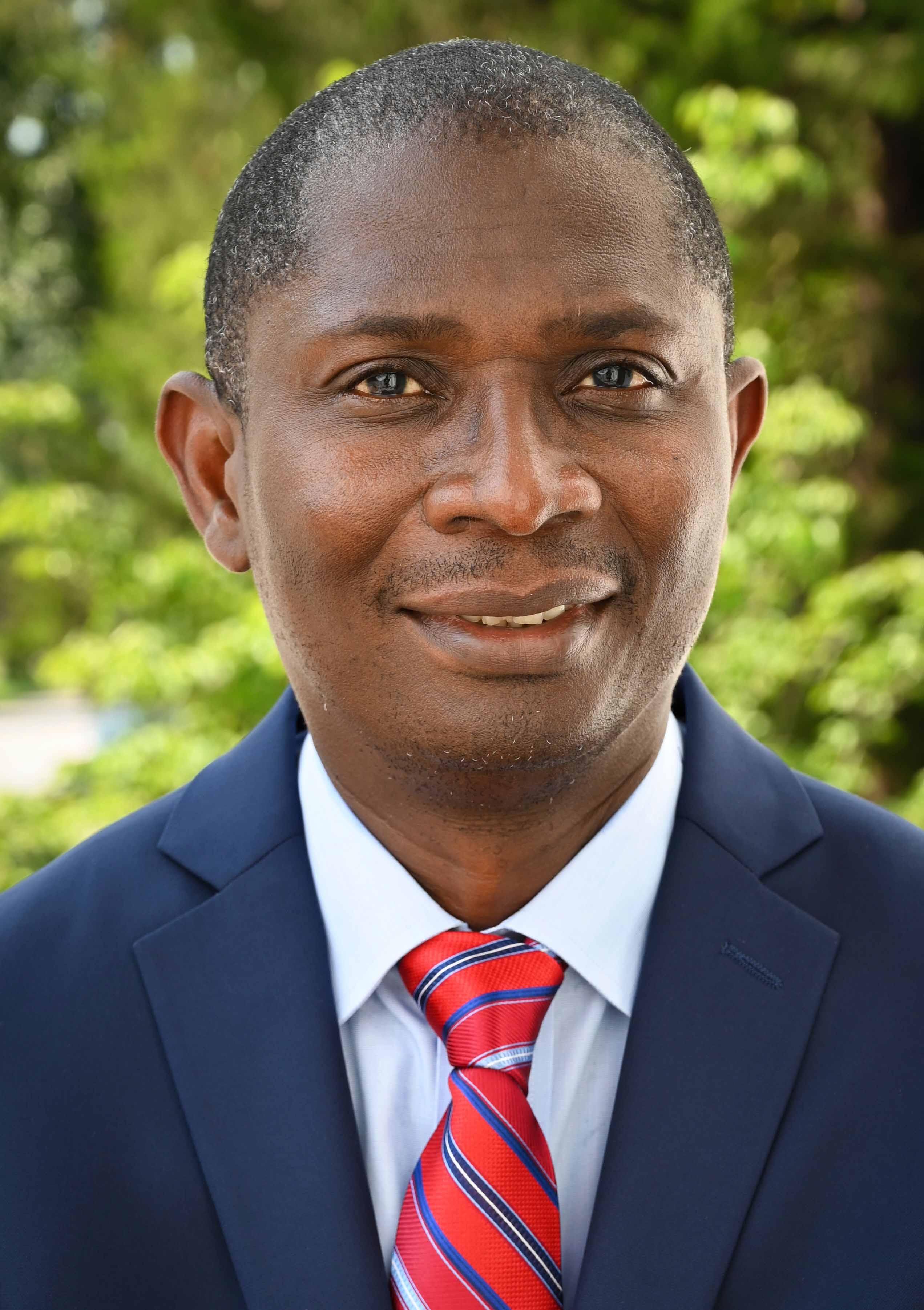
“We are very excited to bring an experienced leader to the department,” said Dr. Eric Tenbus, dean of the College of Arts and Sciences (COAS). “Dr. Fakayode comes to Georgia College with a tangible passion for working directly with students in his lab and supporting faculty. He also exudes a palpable sense of joy in his approach to the job. Furthermore, he has terrific grant writing experience that will be useful in this department.”
Born and raised in Nigeria, Fakayode obtained a Bachelor of Science degree in chemistry and his masters in analytical chemistry at the University of Ibadan, Nigeria. He got his doctorate at Baylor University in Waco, Texas, and did his postdoctoral research in chemistry at Louisiana State University in Baton Rouge, Louisiana.
Prior to coming to Georgia College, Fakayode worked 25 years teaching undergraduate and graduate science courses at the University of Arkansas - Fort Smith, North Carolina A&T State University, Winston-Salem State University and University of Ibadan.
During those years, Fakayode mentored 120 undergraduates, a dozen graduate students, 15 high school youth and two postdoctoral research associates.
About 90% of his students were underrepresented minorities and the first person in their families to go to college. About 95% received financial aid and went on to receive Ph.D.s in medical, pharmaceutical or STEM-related fields. Undergraduates are listed as co-authors in 85% of Fakayode’s research publications.
He also secured and managed almost $3.5 million in grants that helped support students, faculty development and community outreach.
“My research is primarily focused on the use of basic and applied study to stimulate interest and promote student learning,” Fakayode said. “The development of an active learning strategy, along with educational and pedagogical innovation to promote effective teaching and learning is important to me.”
At GCSU, Fakayode sees “many opportunities to work collaboratively with an excellent and dedicated” faculty, staff, students, university leadership and the dean of COAS. He hopes to reinforce the chemistry and physics programs, encourage inter-departmental scholarship and forge research efforts with other schools in the University System of Georgia.
As chair, Fakayode’s top goal is to guide student success, expand the curriculum and work with faculty and staff to increase community engagement and partnerships. He’d like to see more entrepreneurship, economic development and workforce mobility.
“The department of chemistry, physics and astronomy has a solid foundation, requisite infrastructures and dedicated faculty and staff to promote undergraduate research,” Fakayode said. “My overarching goal is to work collaboratively with all the stakeholders to strengthen undergraduate scholarship research innovations.”
Fakayode is happily married to his wife Queen Esther Fakayode. They have three boys and a girl, ages 17 to 24. He likes jogging and going for walks. He enjoys a good cup of coffee, nature in the park, rivers and listening to good music, especially jazz.
A big welcome to the new chair of chemistry, physics and astronomy!
NUCLEUS | 6 | gcsu.edu/science
Goldwater
Scholarship awarded to GCSU student for the first time
Junior biology major Wesley DeMontigny was awarded the Goldwater Scholarship in March—a first for Georgia College. For general research in the natural sciences, mathematics and engineering, the scholarship identifies future researchers and is the most prestigious of its kind.

“The Goldwater Scholarship is the nation's foremost award for undergraduates studying the natural sciences, mathematics, and engineering,” said Anna Whiteside, assistant director of the Honors College and coordinator for the National Scholarships Office. “To earn this award, recipients must have an extensive research experience in addition to an excellent academic record. Wesley worked very hard on putting this application together, and we are so proud of him.”
Wesley DeMontigny presenting at the MURACE Student Research Conference.
The scholarship will provide DeMontigny with $7,500 toward his senior year and hold tremendous power on his curriculum vitae.
“I woke up that morning, knowing the Goldwater would be announced at noon,” he said, “and I was so lightheaded, I thought I would pass out. When I knew I got it, I wasn’t as elated as I thought I’d be—all of a sudden, I realized how much weight had been on my shoulders, and I just felt relaxed.”
His research centers on environmental microbiology. DeMontigny secured the scholarship with an essay about a project he did. It explored bacteria that engulf themselves in crystals and the potential applications of that ability.
“I’m interested in using genetic engineering for potential environmental remediation for industrial uses,” he said. “Microbes are fascinating in that they are everywhere, they’ve been around for an extremely long time, and they are the reason we have almost every resource we need to survive.”
While growing up in Marietta, Georgia, DeMontigny had a natural talent for science. He taught himself to code in middle school
and was a programmer for a healthcare company in high school. Yet, DeMontigny entered college expecting to practice law.
“As I was getting less interested in law, I learned I was very good at understanding cellular biology,” he said. “Natural laws are a fascinating topic. They are descriptive, rather than prescriptive. So, we aren’t telling nature what to do, we’re describing it. We’re saying ‘This is what it is.’”
Georgia College’s liberal arts approach made his journey possible, he said. If DeMontigny hadn’t been required to take biology, he may not be where he is today.
“If I was in a class of 100 people, getting the professor’s time would be more difficult,” DeMontigny said. “Easily communicating with my professors has been a big deal for both the scholarship and my development as a student.”
Getting the scholarship doesn’t mean DeMontigny is finished. The relief that came with securing the award only lasted four days. After he graduates in the fall, DeMontigny will take an eightmonth hiatus, before applying straight into a Ph.D. program.
After that, he plans to go where the graduate experience takes him.
“One of the things I like about the career of a researcher is asking your own questions,” DeMontigny said. “You can ask your own questions and pursue them whether or not someone’s going to pay you to pursue them. I like the freedom to be creative."
STUDENT SPOTLIGHT
NUCLEUS | 7 | gcsu.edu/science
Wesley DeMontigny presenting at the MURACE Student Research Conference.
TEACHER OF THE YEAR
Seticia Smith nurtures her students through math and life
Despite life’s obstacles, Seticia Smith, ’10, ’12, ’17, has given 110% in the classroom. And the Baldwin County School District noticed.
She’s the 2022 Baldwin County Teacher of the Year, a seventh-grade mathematics teacher, department chair and family engagement coordinator at Oak Hill Middle School. Smith is also a survivor of breast cancer and a heart attack. Yet, she puts her students first.
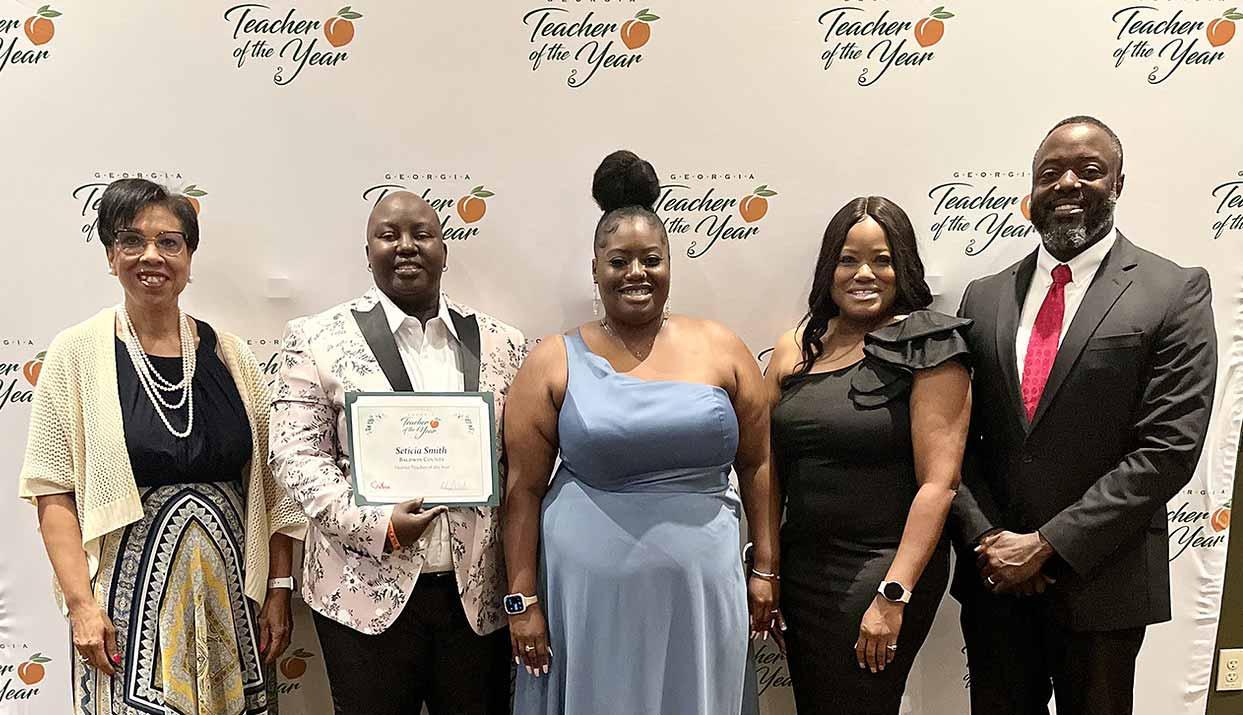
The Baldwin County School District nominated six teachers for Teacher of the Year. Smith won the honor. She is in her 10th year of teaching. Smith prefers teaching middle schoolers, because they are starting to change from children into young adults.
“I just love to help them figure out where they want to go and what they want to be in life,” she said. “I'd like to be a part of that transition—finding out who they are.”
Smith believes in making math fun for students. Whether it’s solving scavengerhunt problems or using their body shape to determine x- and y-axis coordinates or making videos that show kindergarteners how to solve math problems—students thrive in Smith’s class.
Smith found her calling to become an educator when she started teaching Sunday School at her church and volunteering with Oak Hill Middle School’s girls basketball team. Those were the moments she realized she wanted to teach middle school students.
“I just love being with children,” Smith said.
While at Georgia College & State University (GCSU), Smith worked three jobs to help pay tuition. She was determined to get her degrees.
“I was happy that the library stayed open 24/7,” Smith said. “I would get off of work and go to the library to study; get up and do it all over again the next day.”
Her undergraduate degree is in psychology, which helps her understand young adolescents and their thought process. She earned her master’s degree in middle grades education and then completed a specialist in education degree.
STEM TEACHER SPOTLIGHT NUCLEUS | 8 | gcsu.edu/science
At Georgia College, Dr. Angel Abney, professor of mathematics, made math fun for Smith.
She helped Smith become the teacher she is today by modeling how to keep math interesting.
“Dr. Abney was very excited about math,” Smith said. “She wasn’t just at the board, giving instruction. Dr. Abney did a lot of hands-on activities and encouraged students by leading us in the right direction towards solving problems. She never just gave us the correct answer. I found that to be very helpful.”
Smith tries to emulate Abney’s teaching methods by encouraging her students to find the solution to their math problems on their own and not just giving them the answer.
“It’s very difficult to do this with students,” she said. “Sometimes middle schoolers just shut down when they can't get it. But I try to make learning fun for them.”
Smith enjoys seeing the positive strides her students make in math throughout the school year.
“When students start school about 75% to 80% of them hate math, because they didn’t do well in it,” she said. “I don’t force a seventh-grade math curriculum on them, but just see where they are in math and what they can do to focus on their strengths and weaknesses.”
Smith enjoys teachable moments where she can put students at ease with math.
“I have students tell me, ‘You make math seem easier than what I thought,’” Smith said. “And I tell them, ‘I'm glad you're starting to see that math is not so hard—it’s not a monster.’”
Sometimes those teachable moments come full circle, when students teach her new things.
“My students keep me updated with what's going on in the world,” Smith said.
“They're forever evolving and fun to be around. They even teach me new dances—all sorts of new things. I’m not just
their school teacher. I’m able to connect with them on another level.”
Smith also thrives outside the classroom, providing service to her school and community.
Throughout the year, she volunteers with Georgia College’s YES Program—an afterschool and summer learning program for kids. She’s also the voice of Oak Hill Middle School’s football games and Baldwin High School’s basketball games. She coached high school girls basketball and middle school girls track. This will be her first year not coaching due to illness.
“I had a lot of things going on before I got sick,” Smith said. “I’ve had more support than I thought I’d ever have from my co-workers, com munity, church family—every body pitched in and was there for me.”
Now, she’s ready to get back in the classroom, working with her students and seeing them progress in math and life.
“I enjoy seeing them grow by the end of the year, as they de velop more love for the subject,” Smith said. “They will at least try to solve problems instead of just giving up.”

Some of her students have issues in their lives, but when they get to school, it's just a relief for Smith to see smiles on their faces.
“I get to go through life with my students every day,” she said. “We have good days and bad days, but to me, these students are like family for 180 days. We grow together and learn from each other. That's what family does.”
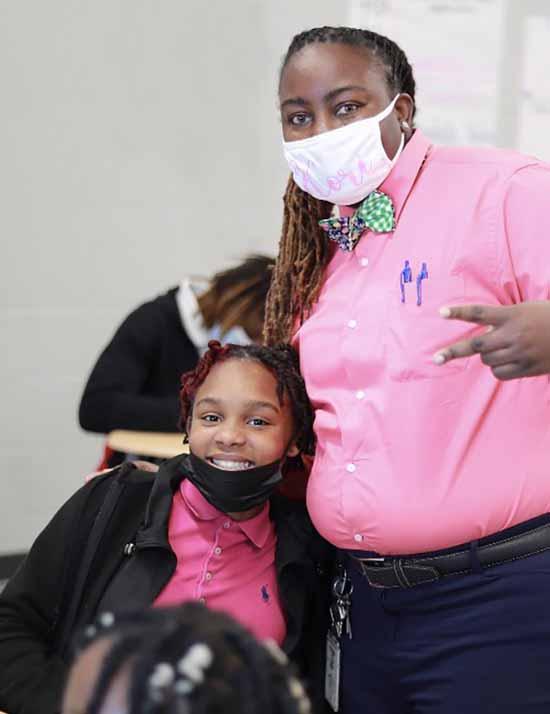
NUCLEUS | 9 | gcsu.edu/science
Setecia Smith with one of her students
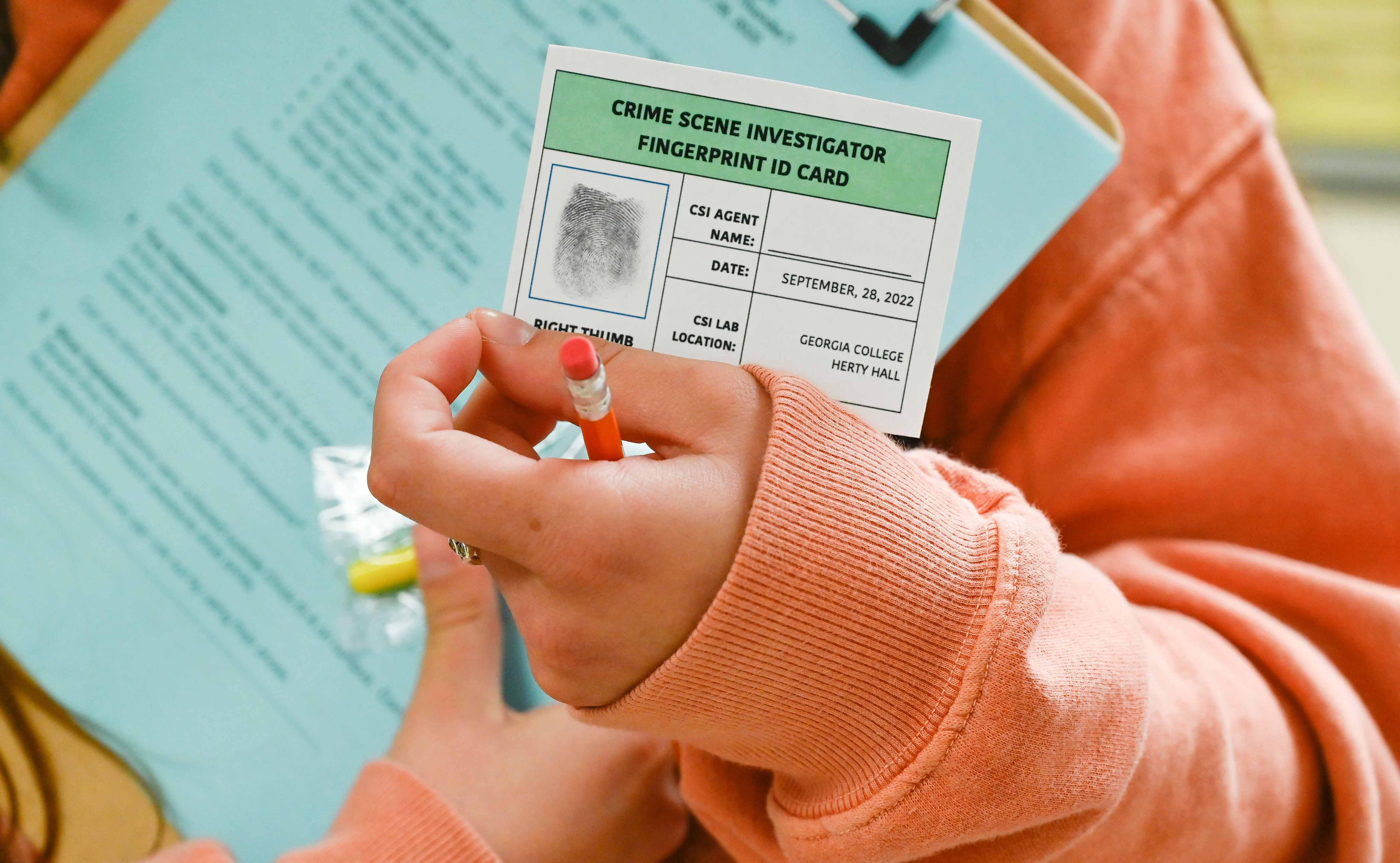

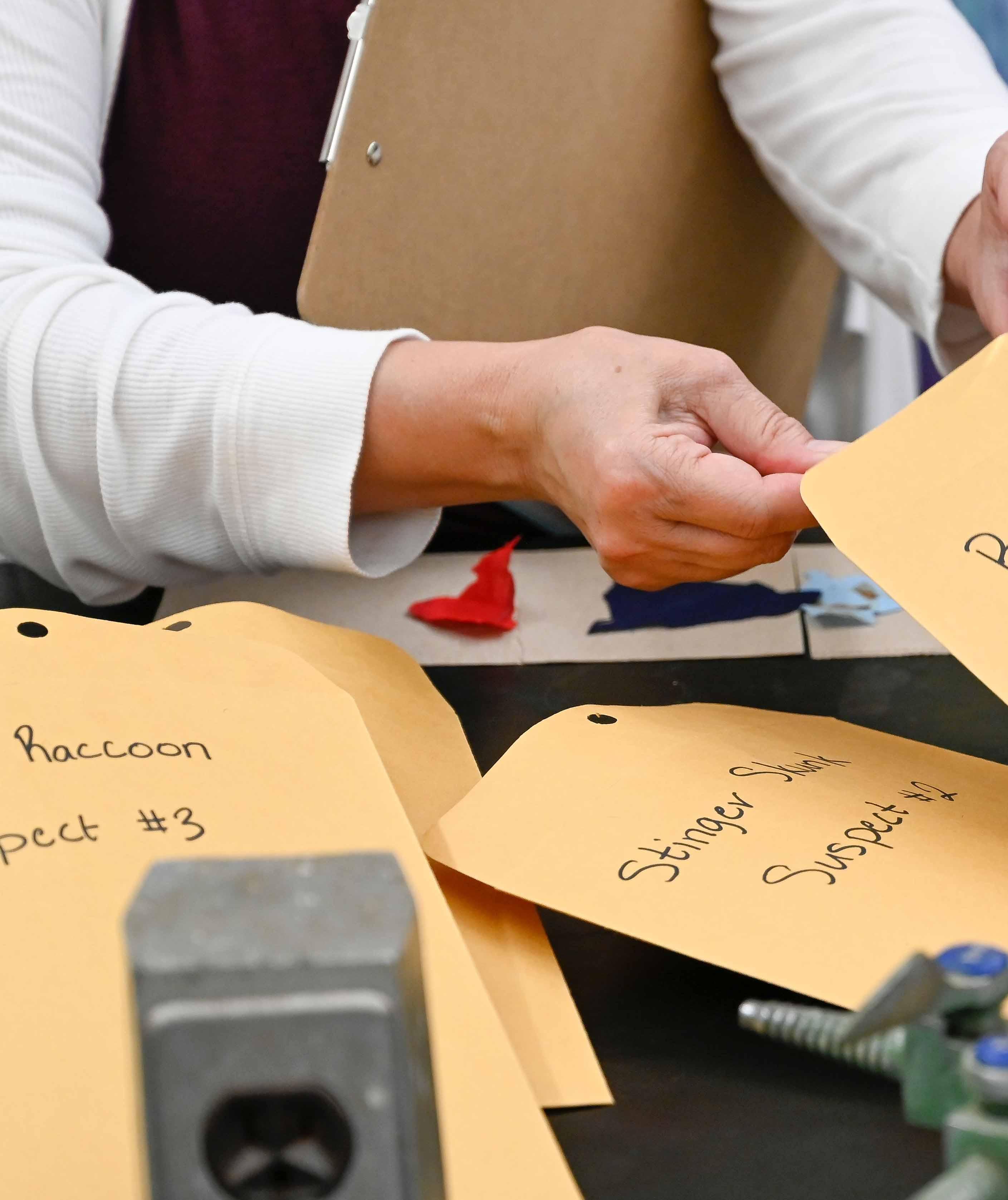
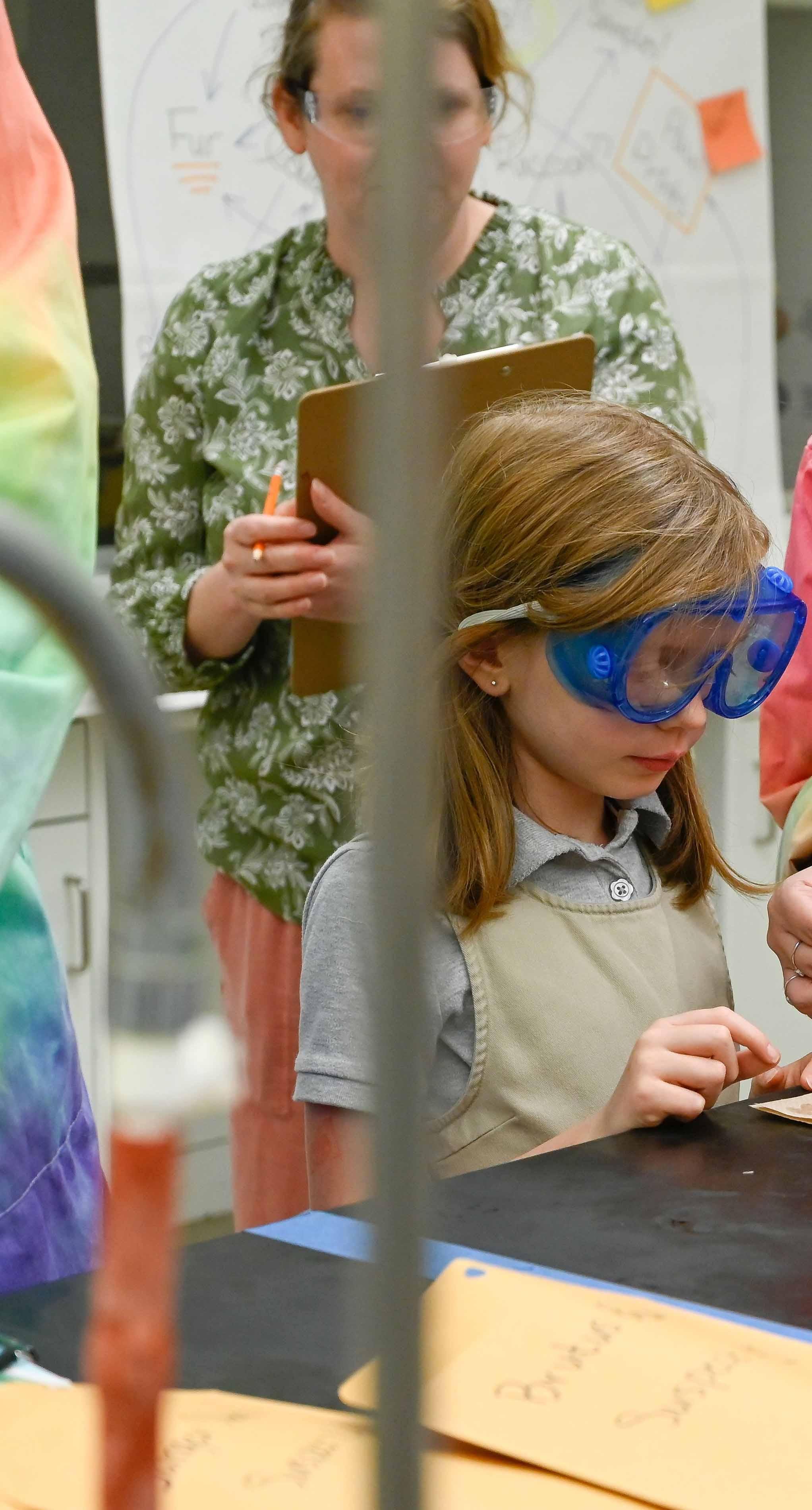

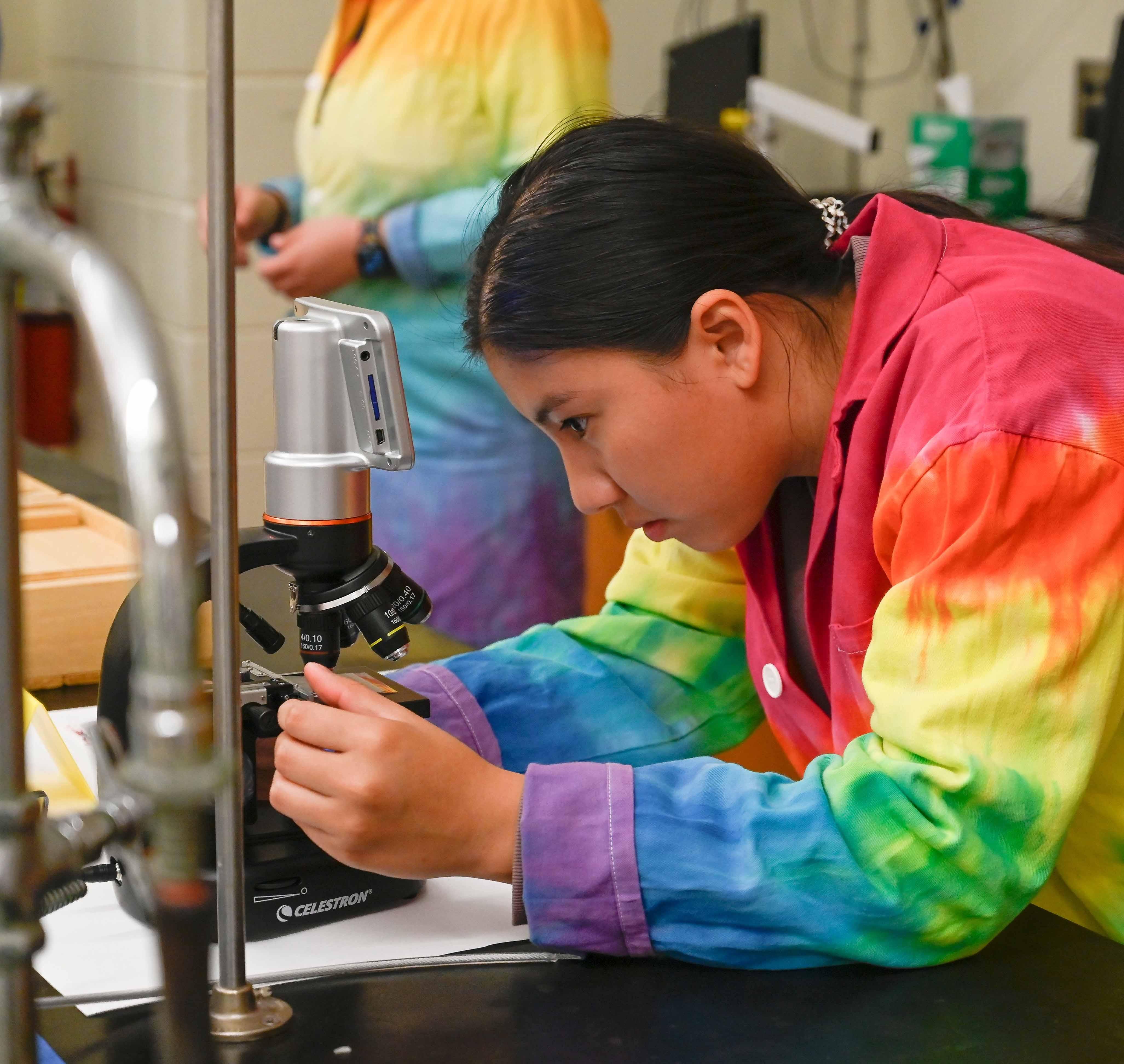
SUSPECTS APPREHENDED after Forensics Night fun
Thunder is safe, and his kidnappers are in custody.
Thanks to a team of dedicated crime scene investigators, the Forensics Night mystery is solved.
Volunteer investigators of all ages collected trace evidence of tire tracks, blood samples, shoe prints, uniform scraps, fingerprints, paw prints and fur. They processed it through a series of five forensic lab stations to narrow the suspect pool and help Georgia College & State University (GCSU) Public Safety catch the kidnapper.
Under the guidance of faculty and student volunteers in the new GCSU forensic chemistry lab, community members got the chance to complete actual forensic analysis—like the Kastle Meyer test.
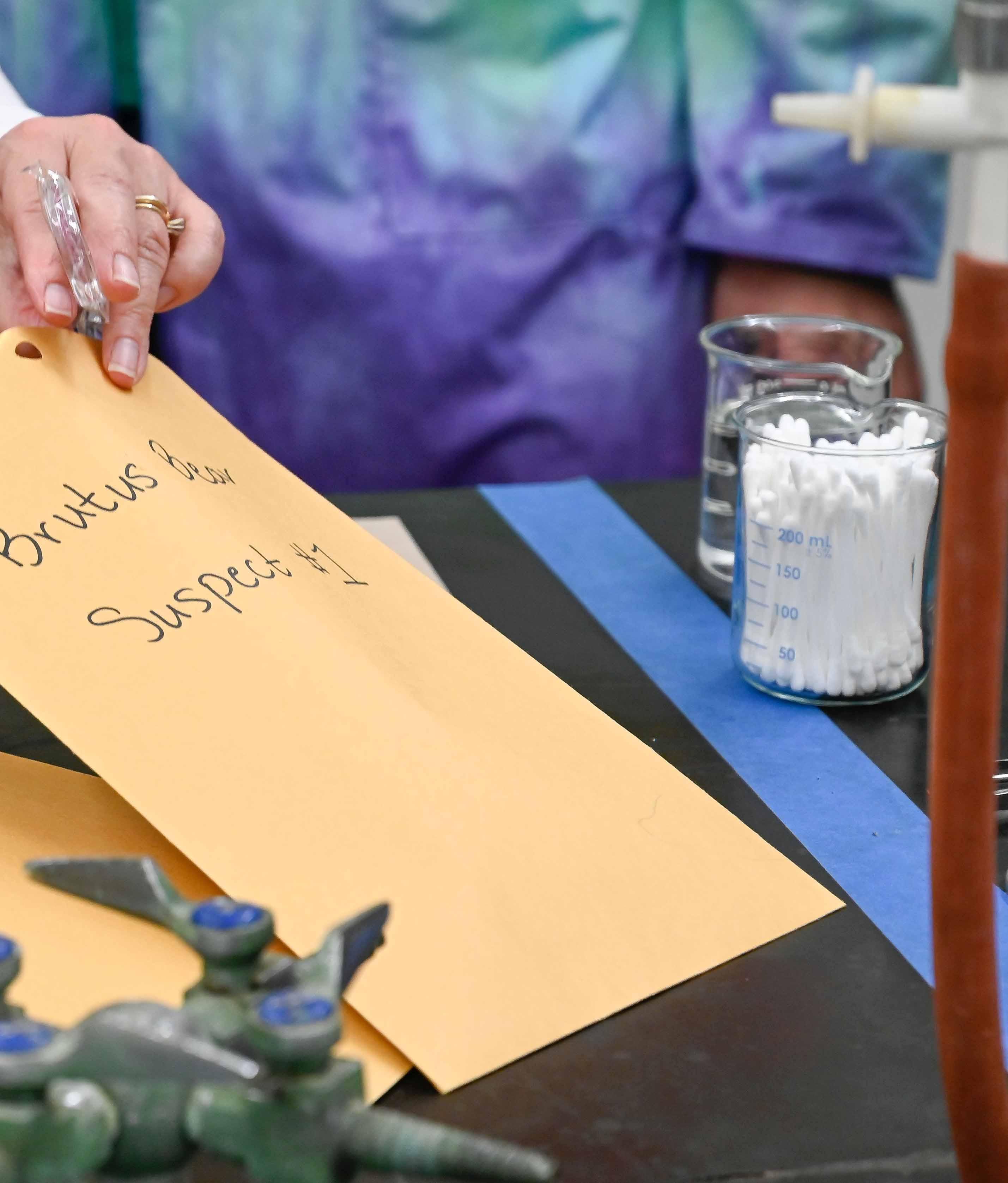
“Forensics Night was designed to celebrate National Forensics Science Week and promote our new forensic chemistry program at Georgia College,” said Dr. Catrena Lisse, professor of chemistry and director of the Science Education Center. “So, they were exposed to technology that they would use in a real crime scene lab.”
The experience in the lab was energetic, welcoming and fun for all ages. Lisse and a group of students came up with the
idea for Forensics Night after the creation of GCSU’s forensic chemistry concentration last year.
The program is the first of its kind in Middle Georgia and has the potential to open new interdisciplinary pathways, exposing students to criminal justice, law, biology, genetics and more.
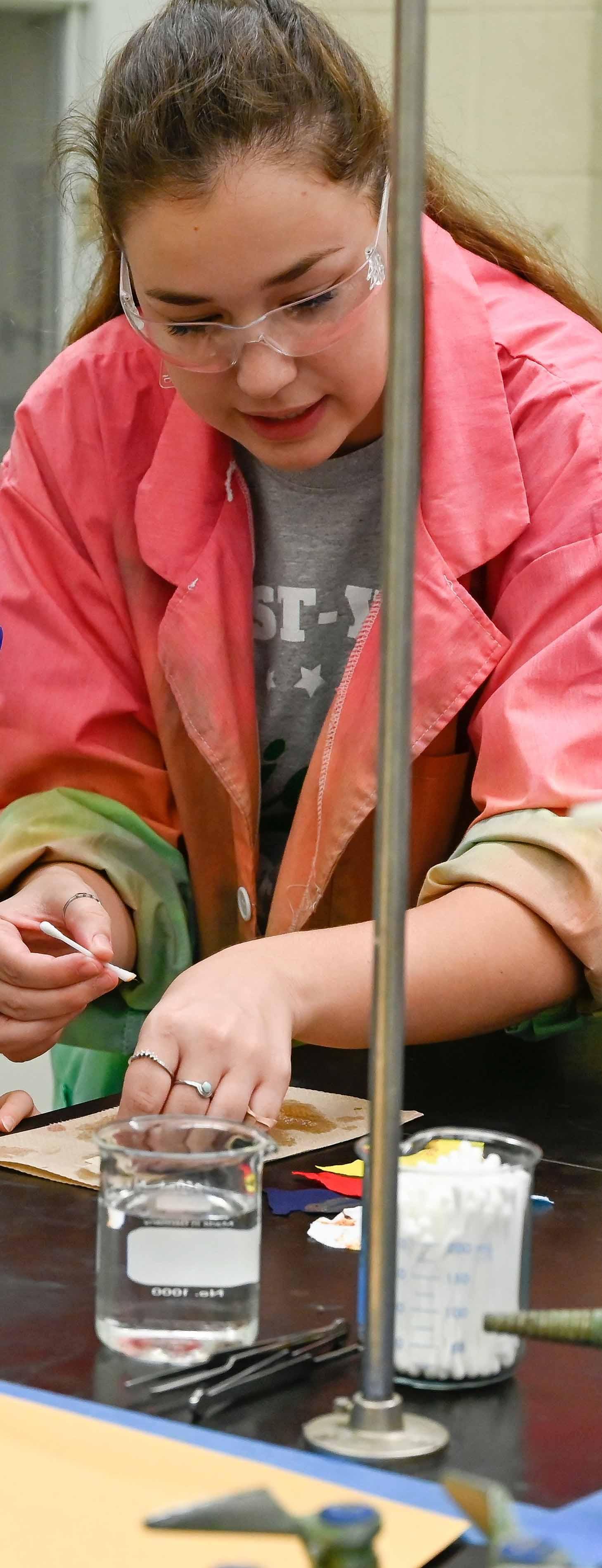
“I’ve always been interested in forensics,” said senior chemistry major and Science Education Center volunteer, Liam Newsome. “I was really excited when I heard that we were actually going to have a program dedicated to that.”
“I’ve been very involved in setting up this entire event,” he said, “and I’m very excited to share this with the community and Georgia College.”
After their guided evidence analysis and crime scene investigation, most participants identified the true culprit.
Brutus Bear and his assistant kidnapped Thunder, and GCSU Police Chief Brett Stanelle apprehended them both.
Case closed.
Welcome home, Thunder!
HIGHLIGHTS
Celebrating Research Excellence in the Caribbean
The Puerto Rico Section of the American Chemical Society (ACS) hosted the 73rd Southeastern Regional ACS meeting (SERMACS 2022), which was held October 19-22, 2022, in beautiful San Juan, Puerto Rico.
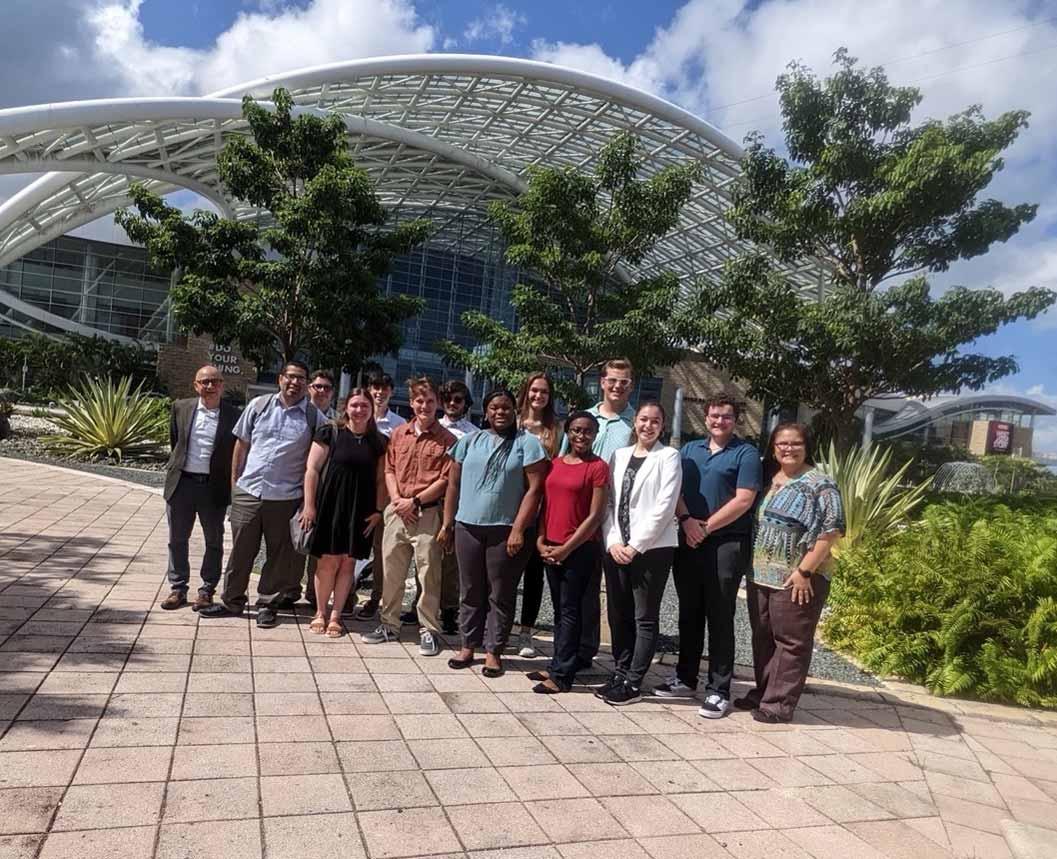
The ACS is the world’s largest scientific association, with a membership of more than 154,000 chemists, chemical engineers and others in related professions. Georgia College & State University (GCSU) Science Education Center director, Dr. Catrena Lisse, traveled to San Juan with six high school students and four GCSU undergraduates in a celebration of their research excellence.
Six Young Scientists Academy (YSA) participants from the summer were accepted to present their research among thousands of fellow scientists.
Due to the Young Scientists Academy’s success, alongside Project SEED members from the ACS, Lisse was invited to deliver an oral presentation about the program at GCSU. The title of her presentation was “YSA and Project SEED: Positively impacting the interest and engagement in chemistry for rural high school students.”
Dr. Peter Rosado-Flores, associate professor of chemistry, and native of Puerto Rico, also traveled with the group.
He offered vast chemical knowledge and a personal insight into some of the island. Students experienced Puerto Rico’s rich Spanish-Afro-American culture, white sandy beaches, beautiful mountains, coastal valleys and over 500 years of history first-hand.
Starlight, Starbright with the James Webb Space Telescope Community Celebration
In the spring of 2022, the Georgia College & State University Science Education Center hosted a NASA “Make Your Own Model of the James Webb Space Telescope” Engineering Design Challenge and opened the competition to all schools in the state of Georgia.
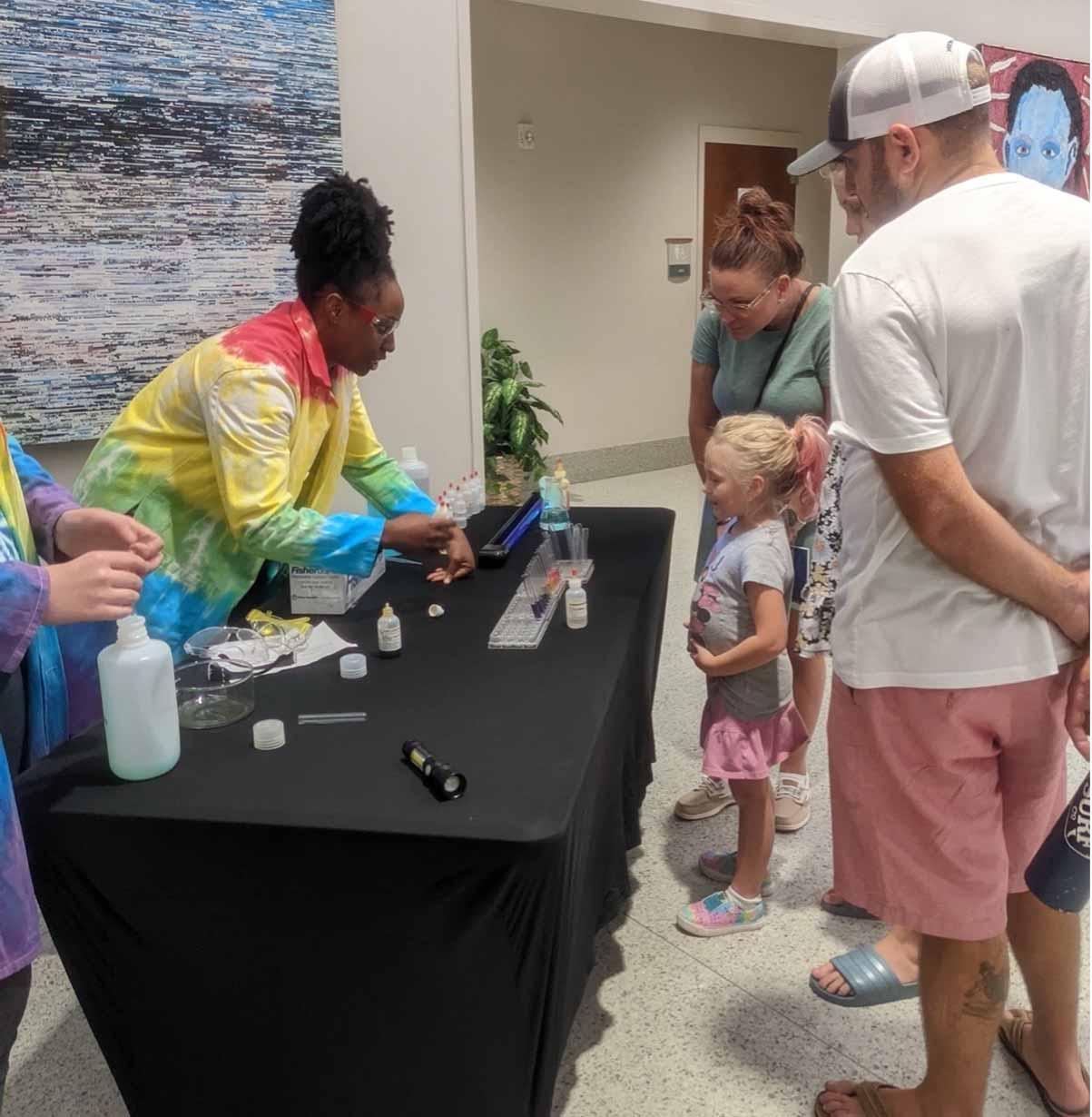
Over 100 schools submitted models from across the state, and a panel of judges, including NASA employees, made the final selection.
Each model was evaluated by age group and creativity. The judges were looking for all major components of the telescope: sunshields, primary mirror, scientific instruments and secondary mirror.
After all models were evaluated, the judging panel made an overall decision for the Grand Prize, and a pair of middle school students, Emily Von Knoblaugh and Mahika Kayyer, from Esther F. Garrison School in Savannah took home the prize.
The Grand Prize Award was an educational goodie bag from NASA about the James Webb Space Telescope and a STEM Community Event.
NUCLEUS | 12 | gcsu.edu/science
HIGHLIGHTS
Science Education Center volunteer, Raven Glover, running the hands-on chemistry booth at the STEM Marketplace.
Fabulous Fibers: The Chemistry of Fabrics
The Science Education Center partnered with the Department of Chemistry, Physics and Astronomy to host the 20th Annual NCW Celebration at GCSU–Family Fun Night.
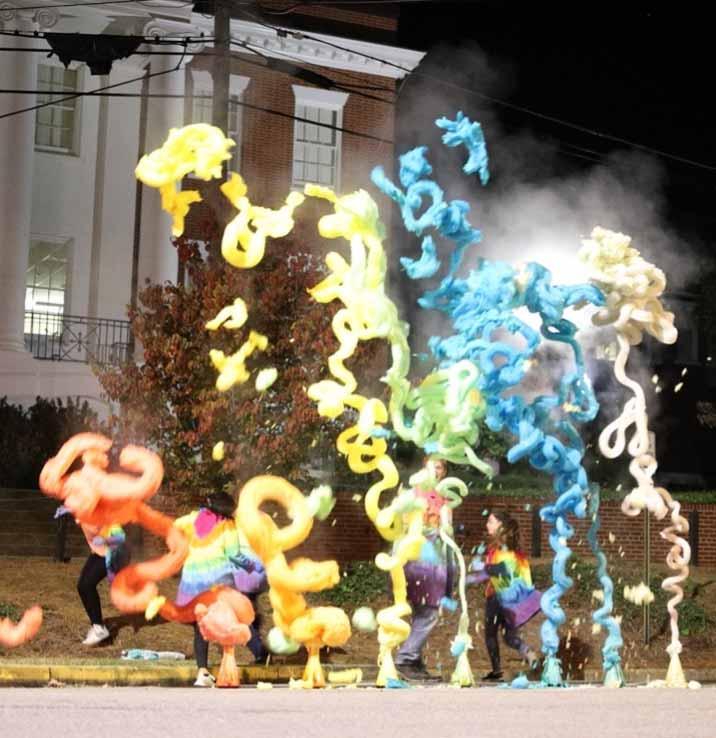
The event welcomed over 400 community members to Herty Hall.
The theme room was sponsored by FiberVisions, and their guest speaker was GCSU alumna, Alexis Crawford. Over 50 GCSU STEM undergraduates volunteered, along with members of the Baldwin County Fire Department to sponsor a variety of hands-on activities and demonstrations.
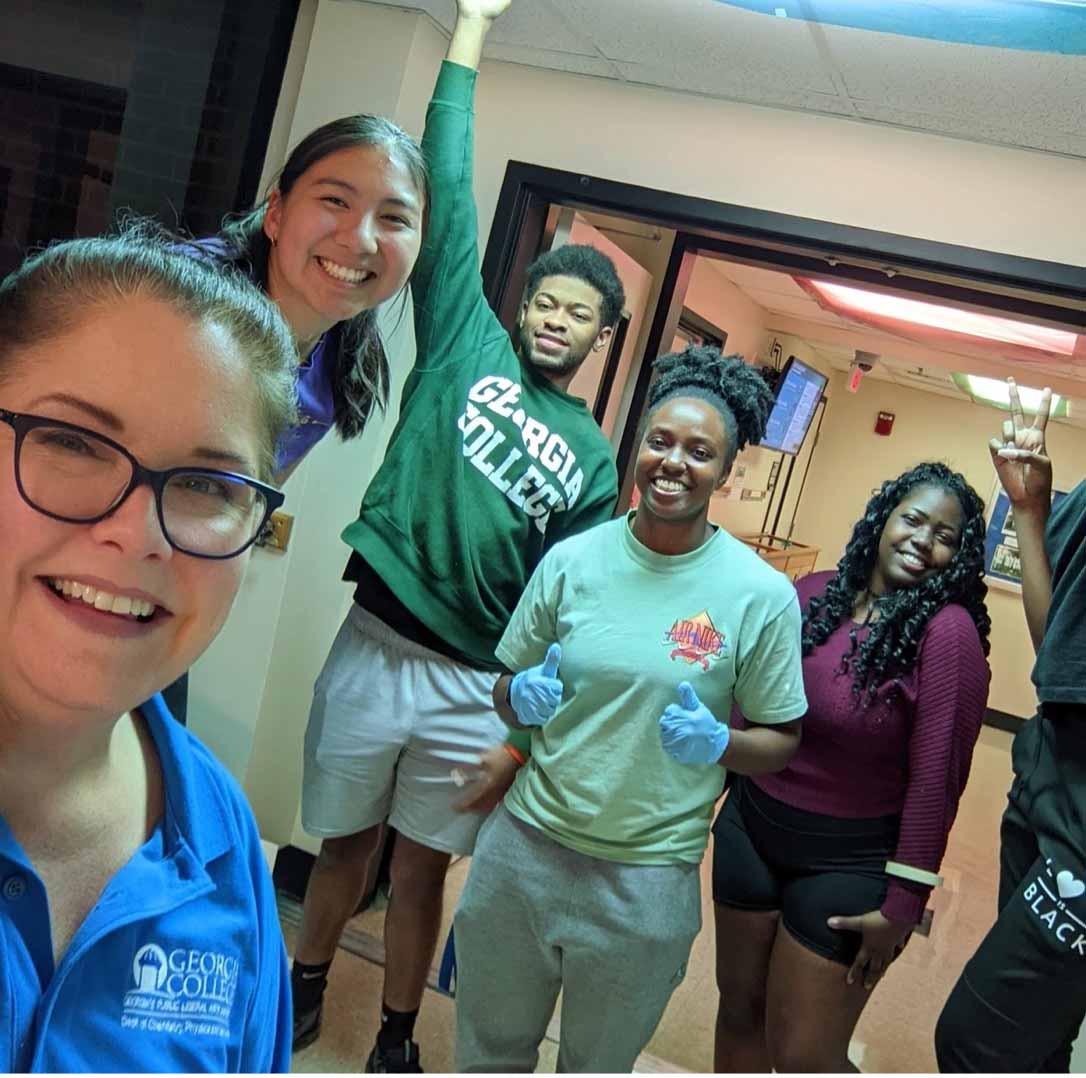
This included testing which fabrics were fire resistant and ways to dye fibers naturally. The night included a popular Science Magic Show presented by Dr. Catrena Lisse and a Tie-Dye lab, Black light Maze, Periodic Table of Cookies and Carving Pumpkins, Chemistry Style.
National Chemistry Week (NCW) is a community-based program of the American Chemical Society (ACS). This annual program unites ACS local sections, student communities, technical divisions, businesses, schools and individuals in communicating the importance of chemistry to our quality of life.
The mission of NCW is to reach the public, particularly elementary and secondary school children, with positive messages about chemistry to: “Make a positive change in the public's impression of chemistry; promote a mechanism for effectively mobilizing ACS local sections; and motivate the ACS membership through local section activities.
NCW is administered by the ACS Office of Science Outreach, which is part of the Education Division.
Exploring the science of "ELECTRICITY AND EXPLOSIONS"
during an academic camp
Since 2003, Academic Outreach has partnered with the Science Education Center to offer an academic summer Science Camp for two weeks.
One week of Science Camp is designed for rising 3rd through 5th graders and another week for rising 6th through 9th graders.
Science Camp is special not only for its immersive hands-on science content, but also because campers choose the theme. Each year current campers vote on the theme for the following year. This year’s theme was Electricity and Explosions.
Campers learned about how electricity works, they deconstructed household items to see how they operate and participated in an explosion or two! The votes are in, and next year’s theme will be: The Mystery of Science! We will explore how science can solve mysteries, how scientific discoveries changed the way we view the world and learn about pseudoscience!

NUCLEUS | 13 | gcsu.edu/science HIGHLIGHTS
You can’t have a science camp about explosions without a Ping Pong Ball Explosion!
Elephant Toothpaste – part of the Family Fun Night Finale
Regional Science and Engineering Fair at GCSU
The 45th Annual Regional Science and Engineering Fair for grades 6 through 12 was held Friday, Feb. 4, at Georgia College & State University’s Centennial Center.

The fair was a hybrid competition this year, offering virtual judging for students unable to travel to campus due to illness or quarantine.
“Even before the seismic disruption of the pandemic, state data showed students from our region lagged with large racial and economic achievement gaps,” said Dr. Catrena Lisse, director of Georgia College’s Science Education Center. “Science is tough enough face-to-face, but asking teachers and students to do it at home behind a computer screen with limited resources was an even bigger obstacle.”
“Now that most schools have returned to in-person or at least hybrid classes, we’re seeing our numbers increase with numerous projects focusing on healthcare topics,” she said. “The pandemic definitely made students aware of their health and the health of their loved ones.”
Some projects this year included an investigation of how blue light, emitted from electronic devices, affects eyes; the antibacterial effects of honey; and the creation of a novel artificial intelligence learning model, using MRI images and genomic data to better diagnose neurological diseases.
“It is our hope this curiosity leads to new discoveries,” Lisse said, “because this is the next generation of doctors and scientists.”
The event included a STEM exhibit and Webb Telescope design challenge. Competitor teams participated in STEM challenges like Rube Goldberg designs and a flying fish obstacle course.

NUCLEUS | 14 | gcsu.edu/science
Georgia College hosts 5th Annual State K-5 Science Fair
Nearly 300 elementary school children from across Georgia competed to show what they’ve learned at the State K-5 Science Fair Thursday, March 10, on Georgia College & State University’s campus.
More than 200 displays explored fingerprint patterns, the best material for turbine blades, tower and bridge stability, alternative energy sources and artificial intelligence. These are just a few topics investigated by young scientists from all regions of the state, including Central Georgia, Savannah, Valdosta and Atlanta.
“It is important for young learners to establish a solid foundation in math and science,” said Dr. Catrena Lisse, director of the Science Education Center. “Participating in a science fair is a great way for kids
to explore their world and how things work. Kids who participate in science fairs at an early age will learn skills that can be used for problem solving and critical thinking throughout their lifetime.”
Over 100 faculty, staff and students, along with members of the Milledgeville community, served as judges and volunteers. Team-building competitions, such as the Zip-Line challenge, paper table building and popular parachute design challenge were held in the afternoon.
These—alongside the annual STEM Marketplace and hands-on activities—allowed young students to learn more about science, technology, engineering and mathematics while participating at the fair.
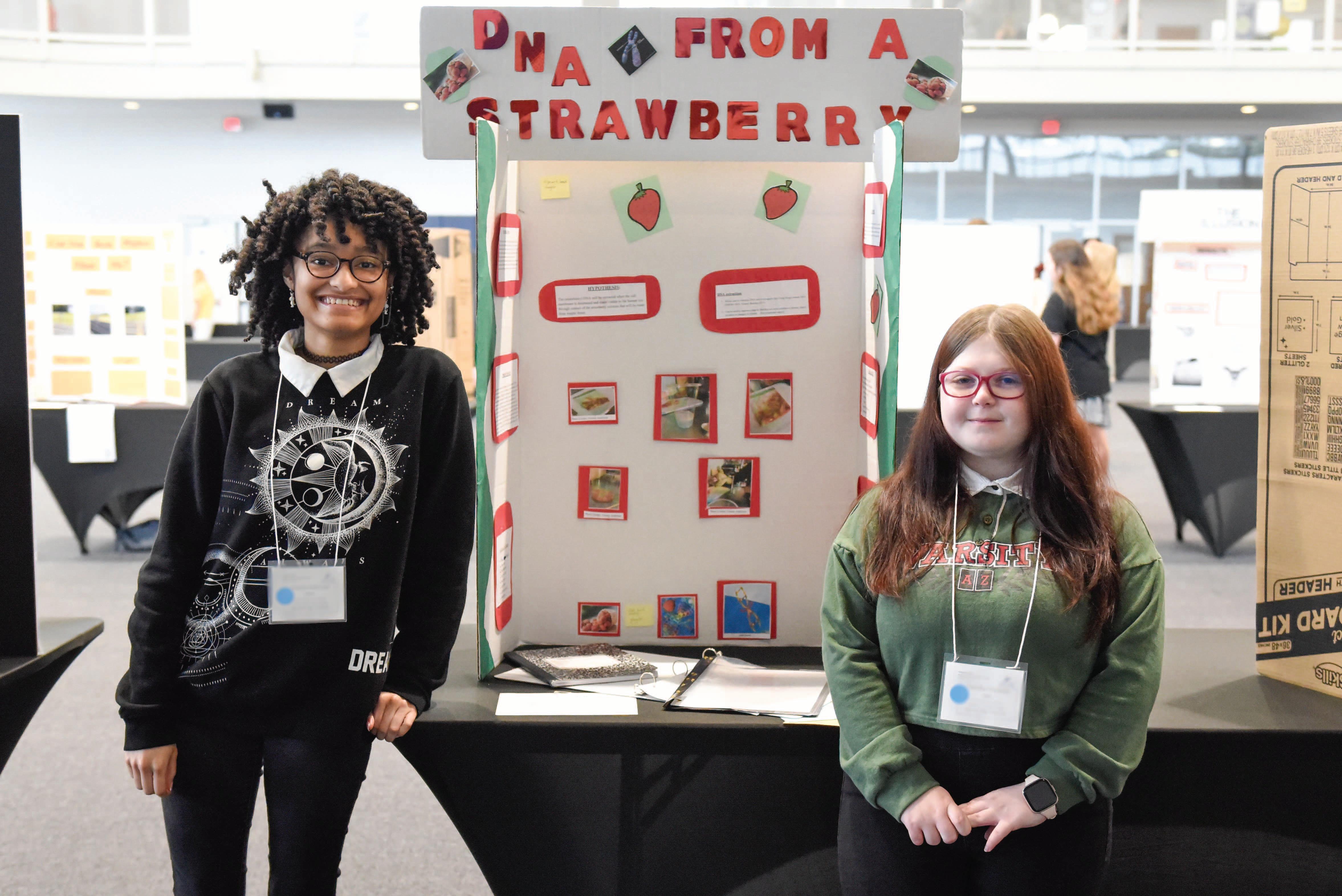
“The students are always so proud of themselves,” said Ginny Gray from Lakeview Primary. “I hear conversations about ‘what went right’ and ‘what they could change next time.’ The science fair is a great way for students to show off their work, build confidence in what they are doing and have the opportunity to share their accomplishments with others. It's a great experience for everyone.”
This was a hybrid event to accommodate teachers and students who couldn’t travel due to illness or COVID-19 restrictions.
“I hope the community will join us to see everything these young scientists accomplished over the past year,” Lisse said, “They are our future!”
NUCLEUS | 15 | gcsu.edu/science
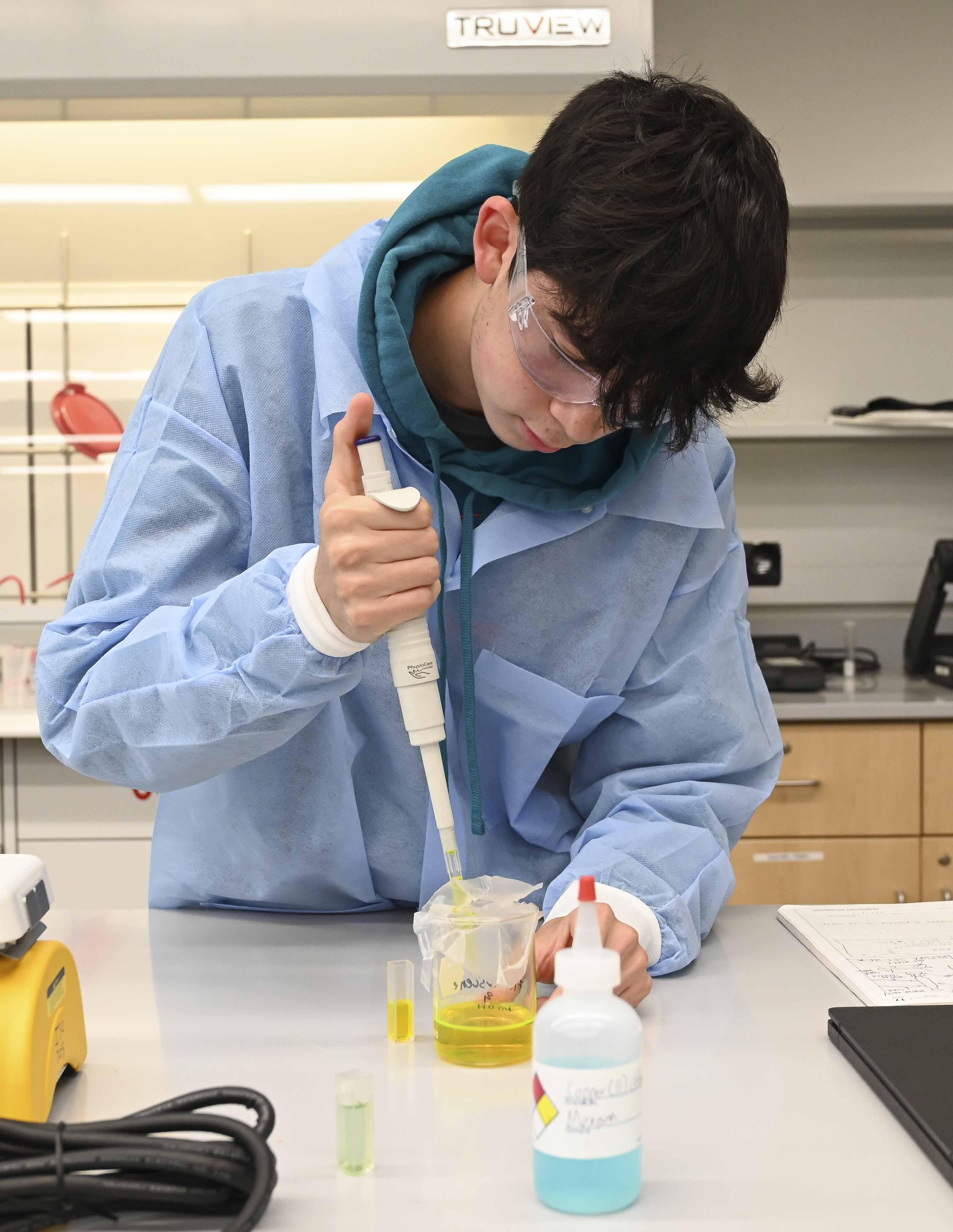
NUCLEUS | 16 | gcsu.edu/science
From highschoolers to scientists in the making:
YSA RETURNS
Written by Cindy O’Donnell Kristen Maddox, contributing writer and editor
Young Scientists Academy (YSA)—a six-week program that gives high school youth from rural areas a crack at university-level research—returned in a big way to Georgia College & State University (GCSU) this summer.
It was the first YSA since the pandemic and, because of COVID-19, its seven high school participants had little or no lab experience. They’d only taken chemistry online.
Their first real lab experience was in Georgia College’s state-of-the-art Integrated Science Complex (ISC) with everything brand new, shiny and clean.
“Most of their chemistry experience was through a computer screen,” said Dr. Catrena Lisse, professor of chemistry and director of the university’s Science Education Center. “Some of them never actually stepped into a chemistry laboratory.”
“The Young Scientists Academy is a high school internship program for research. It’s designed for rural communities to give youth an extra little boost,” she said, “and get them interested in STEM (Science, Technology, Engineering and Math).”
Georgia College’s YSA started in 2007 and operates with grant money through the American Chemical Society (ACS) and donations.
It’s highly competitive. Each student took high school chemistry, was nominated by their teacher and interviewed by a panel of professors. This year, two high school students received ACS Project SEED scholarships to attend.
Participants come from all over Central Georgia. With more funding, Lisse would like to turn YSA into a residential summer program and recruit statewide.
“The most powerful part of this program for me is the experience these young people are getting,” Lisse said. “Coming from a poor community with minimal resources, I know what it’s like to walk into what they call a lab in high school, and you don’t have glassware, you don’t have any of the cool things that really make a lab successful.”
“Giving them this opportunity and seeing their faces when they walk into this lab—it’s exciting,” Lisse said.
COVER STORY
Because this group was inexperienced in lab procedures, Lisse took extra caution teaching safety techniques. The first week reinforced protocols like finding data sheets for various chemicals, using eye wash stations and picking up shattered glass or acid spills.
They moved on to break down, read and understand scientific literature. Participants researched various topics on sol gels—a chemistry process Lisse specializes in. The method is used to create solids from small molecules, like silicon.
Each high school student chose a research topic on sol gels that interests them. Projects ranged from color-changing chemicals that indicate the presence of explosive residue to ways glucose testing can be more cost effective.
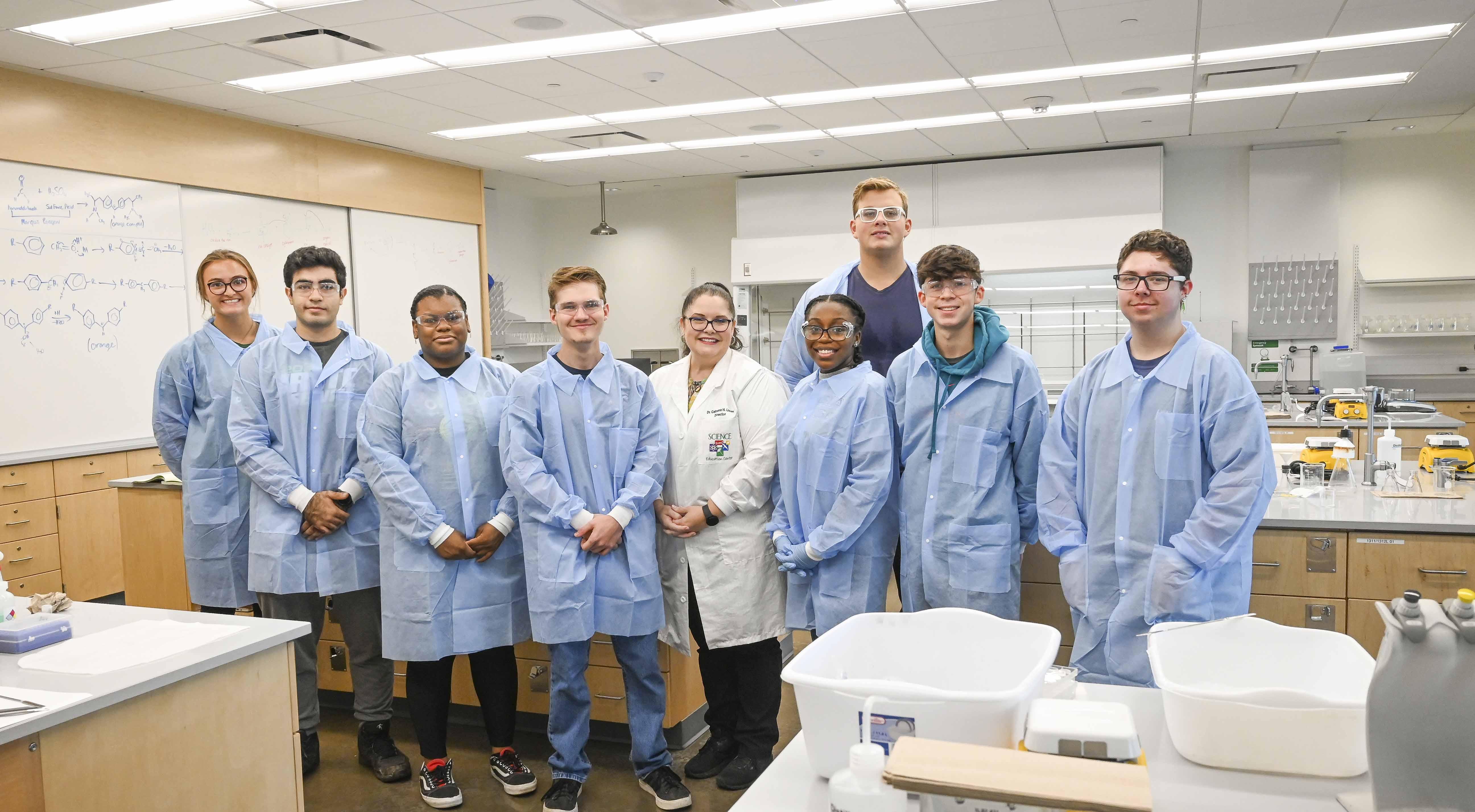
“Every single one of them had to develop their own procedures by trial and error,” Lisse said.
Every morning, the group analyzes problems they encountered the previous day and brainstorm upcoming tasks. Lisse and two Georgia College chemistry majors work one-on-one with participants, guiding and quizzing to ensure a smooth process.
Nathan Walsh of Covington, Georgia is a senior at Eastside High School. He’s interested in biotechnology. Lisse helped him find a project involving sol gels that, when mixed with a certain color-changing enzyme, detects glucose. During his project, Walsh got what Lisse called “very exciting results”—a
reversal, which means his mixture can be used over and over again. This research could potentially help people with diabetes save money with non-disposable testing strips.
“I like the idea of using enzymes to figure out cures and help other people. My dad has type 2 diabetes, so it hits close to home,” Walsh said. “I came in wanting to work with biotechnology, and I feel my knowledge has definitely taken a great leap here.”
Alec Ortiz is a senior at Veterans High School in Warner Robins, Georgia. He’s working with chemicals to detect explosive residue. His molecules will change color when exposed to nitrogen groups like TNT. But Lisse can’t just order TNT, so Ortiz had to first synthesize his own explosives.
His project could result in bomb detectors that react faster than anything used today.
NUCLEUS | 18 | gcsu.edu/science
The most powerful part of this program for me is the experience these young people are getting
“”
Dr. Catrena Lisse Professor of chemistry, Director of the Science Education Center
Morgan Collins of Eatonton, Georgia is a senior at Putnam County High School. He joined YSA with an interest in environmental science. He’s focusing on a way to detect heavy metals that are harmful in water.
His workstation is colorful. Each pastel represents a different metal when exposed to chemicals. The testing mixture he developed—when run through a scientific computing machine—creates a unique signature. It appears as peaks and dips on a graph.
Ultimately, his formula could be used on probes to test water.
“I found it all very interesting, because we can use sol gels, which I’d never even heard of until this program,” Collins said. “I can test water and, by color change, know there’s a problem.”
“I never really had chemistry experience, because I had to take high school chemistry online,” he said. “Being able to experience this allows me to see if I’m interested in it, so I can better prepare myself for what I want to do in the future. This research has shown me I might minor in biochemistry.”
Claire Buck of Sandersville is creating a catalyst to make chemical reactions work faster. Her sol gel particles look like small, black, see-through pearls. They serve as the catalyst to speed up reactions. This could help industries with chemical processes save time and money.
Her project results might also be published, Lisse said.
“I’ve always wanted to do forensic science, which combines chemistry and biology,” Buck said. “When I was told I got in, I was so excited. Everything here is so new and so clean. This is my first lab experience, so this is the standard I’ll be looking for.”
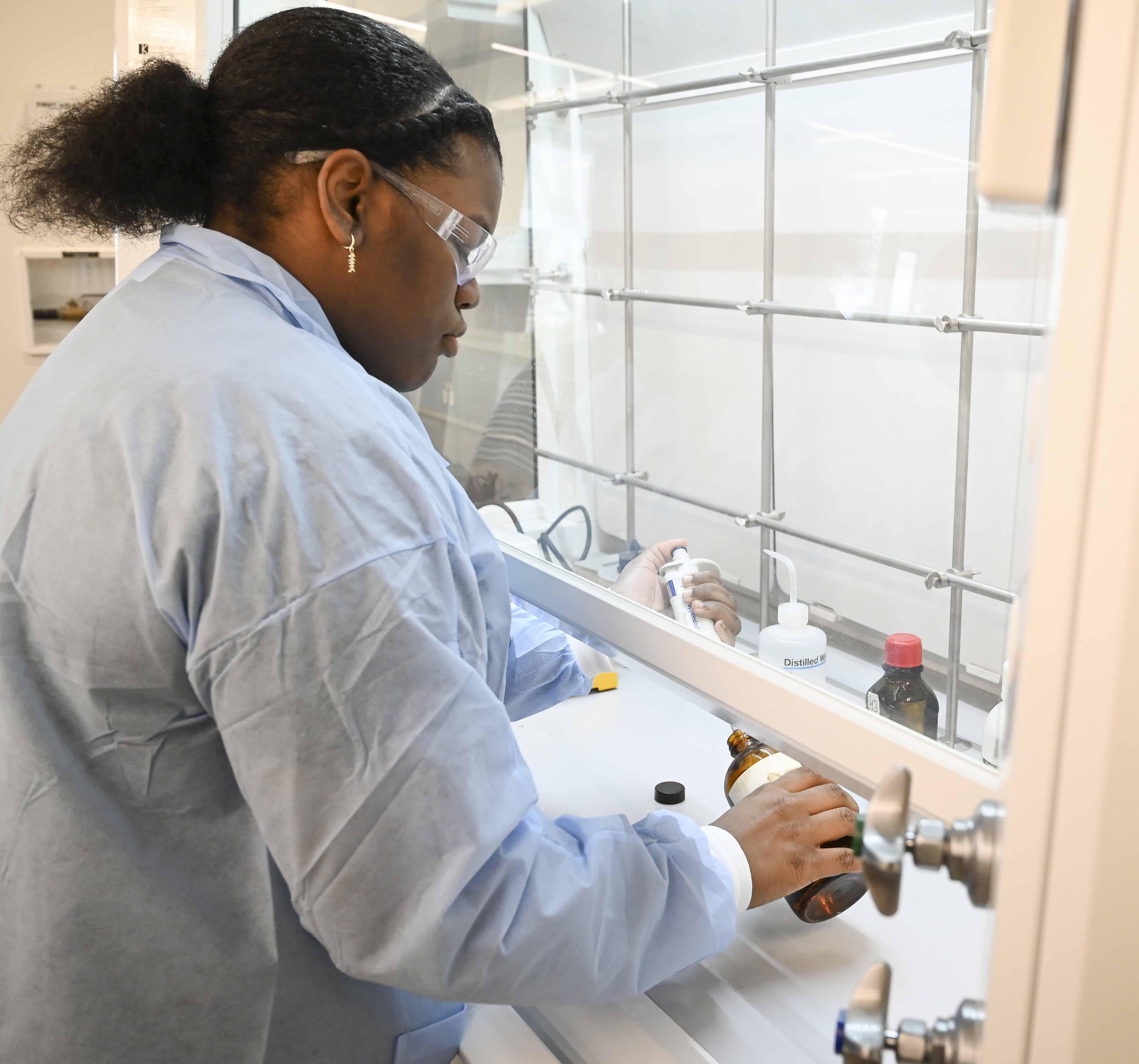
All seven participants presented their projects at a symposium July 22 in Peabody Auditorium. They were cheered on by Lisse and their Georgia College student mentors: Cole Smith and Callie Miller, both junior chemistry majors.
In 2019, Smith participated in YSA as a high school student from Jasper County. That was the last academy before
COVID-19. Now, in the first academy since COVID-19, Smith is mentoring young scientists.
“After that, I chose to come to Georgia College because of the independent undergraduate research going on here,” Smith said. “I’m really good with my hands and really good in the lab, so choosing a college where I could put that to my advantage was at the top of my priority list.”
Being five chemistry classes ahead of his high school youth is a challenge. But Smith’s learning how to explain and teach science—something he may want to do after pursuing a Ph.D. in chemistry.
Having mentorship experience will put him a step ahead when applying for a doctorate.
Similarly, YSA experience will help high schoolers stand out when applying for college. Many former participants won scholarships because of their time at the academy.
That’s Lisse’s ultimate goal—getting these youngsters to college.
“Every step of every process, they have learned something, and that’s what’s really exciting,” Lisse said. “Probably the number one benefit is their confidence, and I have seen it just bloom.”
NUCLEUS | 19 | gcsu.edu/science
Science Education Center
Campus Box 082
Milledgeville, GA 31061
Phone 478-445-7531
Fax 478-445-1092
science@gcsu.edu
Spring 2023
Jan 11-14
March 1
CALENDAR OF EVENTS


Visit gcsu.edu/science for more events.
Association for Science Teacher Education International Conference – Salt Lake City, UT
Young Scientists Academy – Registration Opens
March 1 Science Camps – Registration Opens
March 10-25 Atlanta Science Festival




March 14 Pi Day





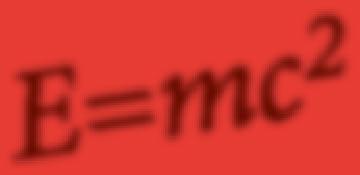
March 18
March 22-25
March 26-30
March 30-April 1
GoSTEM Latino College and STEM Fair – Atlanta, GA
National Science Teacher Association National Meeting – Atlanta, GA
American Chemical Society National Meeting – Indianapolis, IN







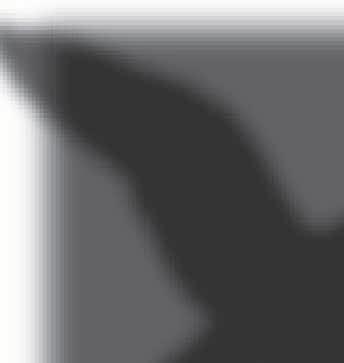




Georgia Science and Engineering Fair – Athens, GA
April Citizen Science Month
April 22 Earth Day
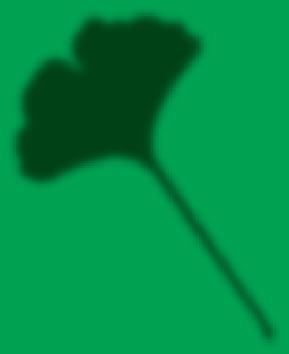
May 1 Young Scientists Academy – Application Deadline
May 13-19
Summer 2023
June 5-6
International Science and Engineering Fair – Dallas, TX
International Conference on Environmental and Science Education – New York, NY






June 11 SciC7:Science is Cool
“Innovation in the STEM Classroom” conference – virtual






June 12-16 Science Camp Junior – Grades 3-5
June 19-23 Science Camp – Grades 6-12
June 12-July 21
June 25-28
July 15-19
Fall 2023
Sept 17-23
Young Scientists Academy and Project SEED
American Society for Engineering Education – Baltimore, MD
American Association of Physics Teachers meeting – Sacramento, CA


National Forensics Science Week
Oct 11 National Fossil Day
Oct 15-21
National Chemistry Week (Family Fun Night on Thursday)
Oct 23 Mole Day



Oct 25-28
Southeastern Regional Meeting of the American Chemical Society – Durham, NC

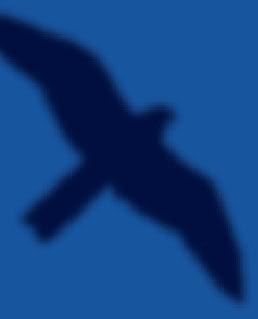

Nov 8 National STEM/STEAM Day
Nov 2-5

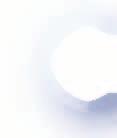
National Biology Teachers Association Meeting – Baltimore, MD
Dec 1 Regional Science and Engineering Fair – Registration Opens
2022-2023 SCIENCE FAIR DATES
Jan 1 Georgia College State K-5 Science Fair – Registration Opens
Jan 15
Feb 10

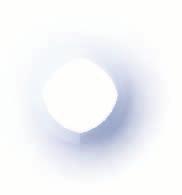

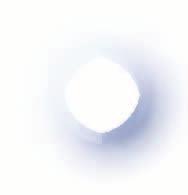
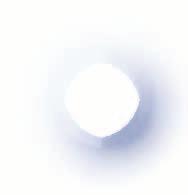

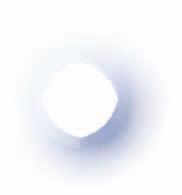
March 10

Regional Science and Engineering Fair
Registration Closes
Regional Science and Engineering Fair
State K-5 Science and Engineering Fair
At the heart of this work is the Georgia College & State University student. Each idea, program, project or initiative was designed around engaging the student in ways they might not be familiar with in science and related fields. Each activity offered GCSU students opportunities for increasing their participation in STEM.
Our students functioned as STEM club officers, camp counselors, worked alongside teachers to deliver classroom activities, coordinated filed trips, facilitated on-campus activities, community shows, family nights, planetarium events, engineering design challenges, evaluated science & engineering fair projects, functioned as supplemental instructors, laboratory assistants, tutors, and much more.
Activities that increased the social responsibility of our GCSU students also increased our broader community’s access to STEM in a seamless intersection of public stewardship and civic engagement.
Dec 1, 2023








Regional Science and Engineering Fair – Registration Opens *Dates Subject to Change

Non-Profit Org. U.S. Postage PAID Permit No. 73 Milledgeville, GA














































































